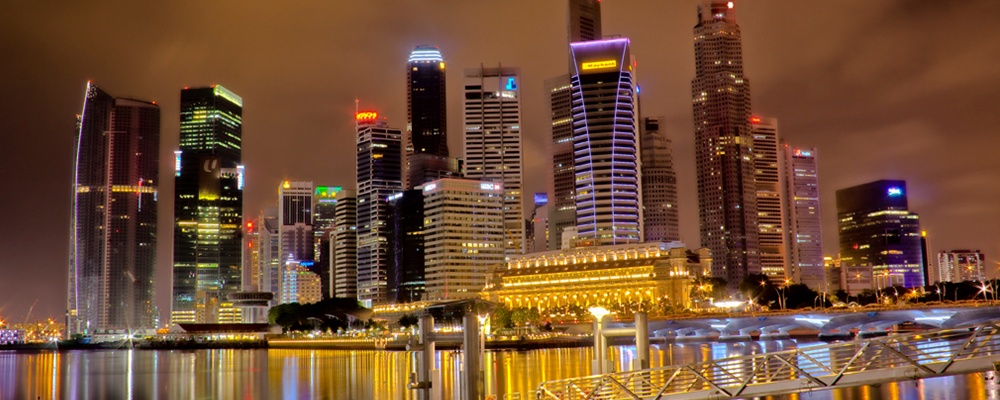
Singapore
( 1 user review )Singapore is a city-state in Southeast Asia. Founded as a British trading colony in 1819, since independence it has become one of the world's most prosperous countries and sports the world's busiest port. Combining the skyscrapers and subways of a modern, affluent city with a medley of Chinese, Indian and Malay influences and a tropical climate, with tasty food, good shopping and a vibrant nightlife scene, this Garden City makes a great stopover or springboard into the region.
Understand
Singapore is a microcosm of Asia, populated by Chinese, Malays, Indians and a large group of workers and expatriates from all across the globe. Singapore has a partly deserved reputation for sterile predictability that has earned it descriptions like William Gibson's "Disneyland with the death penalty" or the "world's only shopping mall with a seat in the United Nations". Nevertheless, the Switzerland of Asia is for many a welcome respite from the poverty, chaos, and crime of much of the Asian mainland, and if you scratch below the squeaky clean surface and get away from the tourist trail you'll soon find more than meets the eye.
Singaporean food is legendary, with bustling hawker centres and 24-hour coffee shops offering cheap food from all parts of Asia, and shoppers can bust their baggage allowances in shopping meccas like Orchard Road and Suntec City. In recent years some societal restrictions have also loosened up, and now you can bungee jump and dance on bartops all night long, although alcohol is very pricey and chewing gum can only be bought from a pharmacy. Gambling casinos will be opening up by 2010 as part of Singapore's new Fun and Entertainment drive, the aim being to double the number of tourists visiting and increasing the length of time they stay. Watch out for more loosening up in the future.
History
The first records of Singapore date back to the 2nd-3rd centuries where a vague reference to its location was found in Greek and Chinese texts, under the names of Sabana and Pu Luo Chung respectively. According to legend, Srivijayan prince Sang Nila Utama landed on the island in the 13th century and, catching sight of a strange creature that he thought was a lion, decided to found a new city he called Singapura, Sanskrit for Lion City. Alas, there have never been any lions anywhere near Singapore or elsewhere on Malaya, so the mysterious beast was more probably a tiger.
More historical records indicate that the island was settled at least two centuries earlier and was known as Temasek, Javanese for "Sea Town", and an important port for the Sumatran Srivijaya kingdom. However, Srivijaya fell around 1400 and Temasek, battered by the feuding kingdoms of Siam and the Javanese Majapahit, fell into obscurity. As Singapura, it then briefly regained importance as a trading centre for the Melaka Sultanate and later, the Johor Sultanate. However, Portuguese raiders then destroyed the settlement and Singapura faded into obscurity once more.
The story of Singapore as we know it today thus began in 1819, when Sir Thomas Stamford Raffles made a deal with a claimant to the throne of the Sultanate of Johor: the British would support his claim in exchange for the right to set up a trading post on the island. Well-placed at the entrance to the Straits of Malacca, straddling the trade routes between China, India, Europe, and Australia, Raffles' masterstroke was to declare Singapore a free port, with no duties charged on trade. As traders flocked to escape onerous Dutch taxes, the trading post soon grew into one of Asia's busiest, drawing people from far and wide. Along with Penang and Malacca, Singapore became one of the Straits Settlements and a jewel in the British colonial crown. Its economic fortunes received a further boost when palm oil and rubber from neighbouring Malaya were processed and shipped out via Singapore. In 1867, Singapore was formally split off from British India and made into a directly ruled Crown Colony.
When World War II broke out, Fortress Singapore was seen as a formidable British base, with massive naval fortifications guarding against assault by sea. However, not only did the fortress lack a fleet as all ships were tied up defending Britain from the Germans, but the Japanese wisely chose to cross Malaya by bicycle instead. Despite hastily turning the guns around, this was something the British had not prepared for at all, and on February 15, 1942, with supplies critically low after less than a week of fighting, Singapore ignominiously surrendered and the colony's erstwhile rulers were packed off to Changi Prison. Tens of thousands perished in the subsequent brutal occupation, and the return of the British in 1945 was less than triumphal — it was clear that their time was up.
Granted self-rule in 1955, Singapore briefly joined Malaysia in 1963 when the British left, but was expelled because the Chinese-majority city was seen as a threat to Malay dominance, and the island became independent on 9 August 1965, thus becoming the only country to gain independence against its own will in the history of the modern world. The subsequent forty years of iron-fisted rule by Prime Minister Lee Kuan Yew saw Singapore's economy boom, with the country rapidly becoming one of the wealthiest and most developed in Asia, earning it a place as one of the four East Asian Tigers. Now led by Lee's son Lee Hsien Loong, the ruling People's Action Party (PAP) continues to dominate the political scene, with 82 out of 84 seats in Parliament (over half won unopposed) and opposition politicians regularly bankrupted by defamation suits. Societal restrictions have been loosened up in recent years though, with the government trying to shake off its staid image, and it remains to be seen how the delicate balancing act between political control and social freedom will play out.
People
Singapore prides itself on being a multi-racial country, and has a diverse culture despite its small size. The largest group are the Chinese, who form about 75% of the population. Amongst the Chinese, Hokkien speakers form the majority, while Teochew and Cantonese speakers round out the top three. Other notable "dialect" groups among the Chinese include the Hakkas, Hainanese and Foochows. The Malays, who are comprised of Singapore's original inhabitants as well as migrants from present day Malaysia, Indonesia and Brunei, form about 14% of the population, while Indians form about 9% of the population. Among the Indians, Tamils form the largest group by far, though there are also a significant numbers of speakers of other Indian languages such as Hindi, Malayalam and Punjabi. The remainder are a mix of many other cultures, most notably the Eurasians who are of mixed European and Asian descent, and also a handful of Burmese, Japanese, Thais and many others.
Climate
Located a mere 1.5 degrees north of the Equator, the weather is usually sunny with no distinct seasons. Rain falls almost daily throughout the year, usually in sudden, heavy showers that rarely last longer than an hour. However, most rainfall occurs during the northeast monsoon (November to January), occasionally featuring lengthy spells of continuous rain. Spectacular thunderstorms can occur throughout the year, normally in the afternoons, so it's wise to carry an umbrella at all times, both as a shade from the sun or cover from the rain.
Between May and October, forest fires in neighboring Sumatra can also cause dense haze, although this is unpredictable and comes and goes rapidly: check the National Environment Agency's site for current data.
The temperature averages around:
-
28°C (79°F) daytime, 24°C (76°F) at night in December and January.
-
32°C (90°F) daytime, 26°C (80°F) at night for the rest of the year.
The high temperature and humidity, combined with the lack of wind and the fact that temperatures stay high during the night, can take its toll on visitors from colder parts of the world. Bear in mind that spending more than about one hour outdoors can be very exhausting, especially if combined with moderate exercise. Singaporeans themselves shun the heat, and for a good reason. Many live in air-conditioned flats, work in air-conditioned offices, take the air-conditioned metro to air-conditioned shopping malls connected to each other by underground tunnels where they shop, eat, and exercise in air-conditioned fitness clubs. Follow their example if you want to avoid discomfort.
Holidays
There are a few twists to the Singapore way of celebrating Chinese New Year, particularly the food, which bears little resemblance to the steamy hotpots of frigid northern China. The top dish is bak kwa (肉干), sweet barbecued pork, followed closely by yu sheng (魚生), a salad of shredded vegetables and raw fish enthusiastically tossed into the air by all present. Favorite desserts are crumbly sweet pineapple tarts and gooey steamed nian gao (年糕) cakes. Red packets of money (ang pow) are still handed out generously, but unlike in China, in Singapore you only need to start paying up once married.
Singapore is a secular city state but thanks to its multicultural population, Singapore celebrates Chinese, Muslim, Indian, and Christian holidays.
The year kicks off with a bang on January 1st and New Year, celebrated in Singapore just as in the West with a fireworks show and parties at every nightspot in town. Particularly famous are the wet and wild foam parties on the beaches of resort island Sentosa — at least those years when the authorities deign to permit such relative debauchery.
Due to the influence of the Chinese majority, the largest event by far is Chinese New Year (农历新年) or, more politically correctly, Lunar New Year, usually held in February. The whole festival stretches out for no less than 42 days, but the frenzied buildup to the peak occurs just before the night of the new moon, with exhortations of gong xi fa cai (恭喜发财 "congratulations and prosper"), red tinsel, mandarin oranges and the year's zodiac animal emblazoned everywhere and crowds of shoppers queuing in Chinatown, where there are also extensive street decorations to add spice to the festive mood. The two following days are spent with family and most of the island comes to a standstill, and then life returns to normal... except for the final burst of Chingay, a colorful parade down Orchard Road held ten days later.
On the fifth day of the fifth month of the Chinese calendar, the Dragon Boat Festival (端午节) is celebrated to commemorate a Chinese folk hero. As part of the celebrations, rice dumplings, which in Singapore are sometimes wrapped in pandan leaves instead of the original bamboo leaves, are usually eaten. In addition, dragon boat races are often held at the Singapore River on this day. The seventh month of the Chinese lunar calendar — usually August — starts off with a puff of smoke, as "hell money" is burned and food offerings are made to please the spirits of ancestors who are said to return to earth at this time. The climax on the 15th day of the lunar calendar is the Hungry Ghost Festival (中元节), when the living get together to stuff themselves and watch plays and Chinese opera performances. Following soon afterwards, the Mid-Autumn Festival (中秋节) on the 15th day of the 8th lunar month (Sep/Oct) is also a major event, with elaborate lantern decorations — particularly in Jurong's Chinese Garden — and moon cakes filled with red bean paste, nuts, and more consumed merrily.
The Hindu festival of lights, Diwali, known locally as Deepavali, is celebrated around October or November and Little India is brightly decorated for the occasion. At around January-February, one may witness the celebration of Thaipusam, a Tamil Hindu festival in which male devotees would carry a kavadi, an elaborate structure which pierces through various parts of his body, and join a procession from the Sri Srinivasa Perumal Temple in Little India to the Sri Thandayuthapani Temple in Tank Road. Female devotees usually join the procession carrying pots of milk instead. About one week before Deepavali is Thimithi, the fire-walking festival where one can see male devotees walking on burning coals at the Sri Mariamman Temple in Chinatown.
The Islamic month of Ramadan and Eid-ul-Fitr or Hari Raya Puasa as it is called here, is a major occasion in Malay parts of town, particularly Geylang Serai on the East Coast, which is lighted up with extensive decorations during the period. Another festival celebrated by the Malays is Eid-ul-Adha, known locally as Hari Raya Haji, which is the period when Muslims make the trip to Mecca to perform in Hajj. In local mosques, lambs contributed by the faithful are sacrificed and their meat is used to feed the poor.
The Buddhist Vesak Day, celebrating the birthday of the Buddha Sakyamuni, plus the Christian holidays of Christmas Day, for which Orchard road is extensively decorated, and Good Friday round out the list of holidays.
A more secular manifestation of community spirit occurs on August 9th, National Day, when fluttering flags fill Singapore and elaborate parades are held.
The Singapore Ministry of Manpower maintains the official list of public holidays.
Tourism
History
The first records of Singapore date back to the 2nd-3rd centuries where a vague reference to its location was found in Greek and Chinese texts, under the names of Sabana and Pu Luo Chung respectively. According to legend, Srivijayan prince Sang Nila Utama landed on the island in the 13th century and, catching sight of a strange creature that he thought was a lion, decided to found a new city he called Singapura, Sanskrit for Lion City. Alas, there have never been any lions anywhere near Singapore or elsewhere on Malaya, so the mysterious beast was more probably a tiger.
More historical records indicate that the island was settled at least two centuries earlier and was known as Temasek, Javanese for "Sea Town", and an important port for the Sumatran Srivijaya kingdom. However, Srivijaya fell around 1400 and Temasek, battered by the feuding kingdoms of Siam and the Javanese Majapahit, fell into obscurity. As Singapura, it then briefly regained importance as a trading centre for the Melaka Sultanate and later, the Johor Sultanate. However, Portuguese raiders then destroyed the settlement and Singapura faded into obscurity once more.
The story of Singapore as we know it today thus began in 1819, when Sir Thomas Stamford Raffles made a deal with a claimant to the throne of the Sultanate of Johor: the British would support his claim in exchange for the right to set up a trading post on the island. Well-placed at the entrance to the Straits of Malacca, straddling the trade routes between China, India, Europe, and Australia, Raffles' masterstroke was to declare Singapore a free port, with no duties charged on trade. As traders flocked to escape onerous Dutch taxes, the trading post soon grew into one of Asia's busiest, drawing people from far and wide. Along with Penang and Malacca, Singapore became one of the Straits Settlements and a jewel in the British colonial crown. Its economic fortunes received a further boost when palm oil and rubber from neighbouring Malaya were processed and shipped out via Singapore. In 1867, Singapore was formally split off from British India and made into a directly ruled Crown Colony.
When World War II broke out, Fortress Singapore was seen as a formidable British base, with massive naval fortifications guarding against assault by sea. However, not only did the fortress lack a fleet as all ships were tied up defending Britain from the Germans, but the Japanese wisely chose to cross Malaya by bicycle instead. Despite hastily turning the guns around, this was something the British had not prepared for at all, and on February 15, 1942, with supplies critically low after less than a week of fighting, Singapore ignominiously surrendered and the colony's erstwhile rulers were packed off to Changi Prison. Tens of thousands perished in the subsequent brutal occupation, and the return of the British in 1945 was less than triumphal — it was clear that their time was up.
Granted self-rule in 1955, Singapore briefly joined Malaysia in 1963 when the British left, but was expelled because the Chinese-majority city was seen as a threat to Malay dominance, and the island became independent on 9 August 1965, thus becoming the only country to gain independence against its own will in the history of the modern world. The subsequent forty years of iron-fisted rule by Prime Minister Lee Kuan Yew saw Singapore's economy boom, with the country rapidly becoming one of the wealthiest and most developed in Asia, earning it a place as one of the four East Asian Tigers. Now led by Lee's son Lee Hsien Loong, the ruling People's Action Party (PAP) continues to dominate the political scene, with 82 out of 84 seats in Parliament (over half won unopposed) and opposition politicians regularly bankrupted by defamation suits. Societal restrictions have been loosened up in recent years though, with the government trying to shake off its staid image, and it remains to be seen how the delicate balancing act between political control and social freedom will play out.
Climate
Located a mere 1.5 degrees north of the Equator, the weather is usually sunny with no distinct seasons. Rain falls almost daily throughout the year, usually in sudden, heavy showers that rarely last longer than an hour. However, most rainfall occurs during the northeast monsoon (November to January), occasionally featuring lengthy spells of continuous rain. Spectacular thunderstorms can occur throughout the year, normally in the afternoons, so it's wise to carry an umbrella at all times, both as a shade from the sun or cover from the rain.
Between May and October, forest fires in neighboring Sumatra can also cause dense haze, although this is unpredictable and comes and goes rapidly: check the National Environment Agency's site for current data.
The temperature averages around:
-
28°C (79°F) daytime, 24°C (76°F) at night in December and January.
-
32°C (90°F) daytime, 26°C (80°F) at night for the rest of the year.
The high temperature and humidity, combined with the lack of wind and the fact that temperatures stay high during the night, can take its toll on visitors from colder parts of the world. Bear in mind that spending more than about one hour outdoors can be very exhausting, especially if combined with moderate exercise. Singaporeans themselves shun the heat, and for a good reason. Many live in air-conditioned flats, work in air-conditioned offices, take the air-conditioned metro to air-conditioned shopping malls connected to each other by underground tunnels where they shop, eat, and exercise in air-conditioned fitness clubs. Follow their example if you want to avoid discomfort.
Getting there
There's more to the list than just porn and drugs:
- Overhead wires
- Satellite dishes
- Standing water
- Freestanding billboards
- Handcuffs, even if pink and fuzzy
- Feeding pigeons or monkeys
- Malaysian newspapers
- Homosexual activity
Most nationalities can enter Singapore without a visa. Refer to the Immigration and Checkpoints Authority for current guidelines, including a list of the 30+ nationalities that are required to obtain a visa in advance. Entry permit duration (in most cases either 14 or 30 days, with 90 days for British and US Citizens) depends on nationality and entry point.
Singapore has very strict drug laws, and drug trafficking carries a mandatory death penalty — which is also applied to foreigners. Even if you technically haven't entered Singapore and are merely transiting (i.e. changing flights without the need to clear passport control and customs) while in possession of drugs, you would still be subject to capital punishment. The paranoid might also like to note that in Singapore, it is an offence even to have any drug metabolites in your system, even if they were consumed outside Singapore, and Customs occasionally does spot urine tests at the airport! In addition, bringing in explosives or firearms without a permit is also a capital offence in Singapore.
Bring prescriptions for any medicines you may have with you, and obtain prior permission from the Health Sciences Authority before bringing in any sedatives (eg. Valium/diazepam) or strong painkillers (eg. codeine). Hippie types may expect a little extra attention from Customs, but getting a shave and a haircut is no longer a condition for entry.
Duty free allowances for alcohol are 1 L of spirits, 1 L of wine and 1 L of beer per person unless you are entering from Malaysia, from which there is no duty free allowance. Alcohol may not be brought in by persons under the age of 18. There is no duty free allowance for cigarettes: all cigarettes legally sold in Singapore are stamped "SDPC", and smokers caught with unmarked cigarettes may be fined $500 per pack. (In practice, though, bringing in one opened pack is usually tolerated.) If you declare your cigarettes or excess booze at Customs, you can opt to pay the tax or let the customs officers keep the cigarettes until your departure. Bringing in chewing gum is also illegal, though customs officers would usually not bother with a few sticks for personal consumption as long as you are discreet about it.
Pornography, pirated goods and publications by the Jehovah's Witnesses and the Unification Church may not be imported to Singapore, and baggage is scanned at land and sea entry points. In theory, all entertainment media including movies and video games must be sent to the Board of Censors for approval before they can be brought into Singapore, but in practice this is rarely if ever enforced for original (non-pirated) goods.
By plane
Singapore is one of Southeast Asia's largest aviation hubs, so unless you're coming from Peninsular Malaysia or Batam/Bintan in Indonesia, the easiest way to enter Singapore is by air. In addition to flagship carrier Singapore Airlines and its regional subsidiary SilkAir , Singapore is also home to Tiger Airways , and Jetstar Asia .
In addition to the locals, every carrier of any size in Asia offers flights to Singapore, with pan-Asian discount carrier AirAsia and Malaysian regional operator Firefly operating dense networks from Singapore. There are also direct services to Europe, the Middle East, Australia, New Zealand, North America, and even South Africa. Singapore is particularly popular on the "Kangaroo Route" between Australia and Europe, with airlines like Qantas and British Airways using Singapore as the main stopover point.
Changi Airport
No transfer facilities are available at the Budget Terminal, so if one or more of your connecting flights arrives or departs here, you have to go through arrival immigration and customs, check in your luggage again and go through departure immigration. If required for your nationality, you will need a valid Singapore visa for this, and it's best to allow at least 2-3 hours to complete the process. Transfers between the main terminals do not require this rigmarole.
As befits the country's main airport and major regional hub status, Changi Airport (IATA : SIN; ICAO : WSSS) is big, pleasant, and well organized, and immigration and baggage distribution is remarkably fast. The airport is split into three main terminals (T1, T2 and T3) plus a dedicated Budget Terminal for low-cost airlines (currently only Tiger Airways, Cebu Pacific and Firefly).
Figuring out which terminal your flight arrives in or departs from can be complicated: for example, Singapore Airlines uses both T2 and T3, and only announces the arrival terminal two hours before landing. Fortunately transfers are quite easy, as the three main terminals are connected with the free Skytrain service, which can be used without passing through immigration. The Budget Terminal, on the other hand, can only be reached by a shuttle bus from the basement of T2.
If you have over five hours to spare there are free city tours six times a day, check in at the Singapore Visitor Centre in any terminal. Even if stuck in the airport, there are plenty of ways to kill time, as each terminal has a unique design and the airside areas of T1, T2, and T3 are attractions in themselves. T2, arguably the most interesting, has an indoor garden, a music listening area with couches and mood lighting, a computer gaming room, a small movie theater, paid massage services, and of course plenty of duty-free shops. T3, the newest, has a butterfly garden and plenty of natural light, but fewer entertainment options. T1 has a swimming pool and jacuzzi. The Budget Terminal, on the other hand, is strictly functional.
In all terminals, internet access is provided free of charge, both wirelessly and via some 200 terminals and kiosks, there are some X-Boxes set up to keep gamers entertained, and there's live lounge music at times. There are also SingTel and Starhub payphones that offer unlimited free local calls. ATMs abound and money changers offer reasonable rates as well, although you pay a small premium compared to the city. Food options are varied and generally reasonably priced, with some choice picks including the Peranakan-themed Soup Restaurant (T2 landside), which serves much more than just soup, and Sakae Sushi (T2 airside). If you're up for a little adventure, seek out the staff canteen at level 3M of the carpark next to T1, it's open to the public and serves cheap local food.
Terminals T1, T2 and T3 all have airside (i.e., accessible without passing through immigration) transit hotels - tel. +65-65419106 or book online via the Ambassador Transit Hotel website. A six-hour "block" for a single/double/triple costs $73.56/82.39/110.35, budget singles (shared bathroom) $51.50, extensions $17.65 per hour. You can rent a shower (without a room) to freshen up for $8.40. The Plaza Premier Lounges also offer a basic but functional gym with shower for $8.40 with a Singapore Airlines boarding pass.
From the airport there are a number of ways to get into the city:
-
Taxi (cab) is easiest - simply follow the signs after clearing customs. Meters are always used in Singapore and prices are reasonable. A trip to the city during the day will be between $20 and $30 including $3-5 airport surcharge. An additional 50% surcharge applies between midnight and 6 AM.
-
Limousines charge a flat $35 to anywhere in the city and are a pretty good deal after midnight, as you can skip the queue and avoid the surcharge. The same pricing applies to chartering van-sized MaxiCabs, which are good for large families or if you have lots of baggage.
-
Shuttle - Shared six-seater MaxiCab shuttle service to designated areas/hotels costs $7.00 and can be booked in advance or in the arrivals hall. 6AM to 2AM, every 15 to 30 minutes.
-
Subway - MRT trains run from a station between T2 and T3, but you'll need to change trains at Tanah Merah to a city-bound train: just exit through the left hand side door and cross the platform. The 30-minute ride to City Hall station costs $1.40 plus a refundable $1 deposit, and trains run from 5:31 AM to 11:18 PM.
-
Bus - Bus terminals can be found in the basements of T1, T2 and T3. 6 AM to midnight only. Fares are sub-$2.00, exact fare required (no change given).
Seletar Airport
Seletar Airport (IATA : XSP; ICAO : WSSL), completed in 1928 and first used for civil aviation in 1930, is Singapore's first airport. While later airports like Kallang and Paya Lebar have been closed and turned into a military airbase respectively, Seletar is still in use to this day.
Berjaya Air flights to the Malaysian islands of Redang and Tioman use Seletar, not Changi. The only practical means of access to Seletar is taxi; trips from the airport incur a $3 surcharge. Allow at least 30 min - 1 hour traveling time to make transfers between Seletar and Changi.
Seletar is also Singapore's general aviation airport so if you own a private aircraft, you will most likely land here.
By road
Singapore is linked by two land crossings to Peninsular Malaysia:
The Causeway is a very popular and thus terminally congested entry point connecting Woodlands in the north of Singapore directly into the heart of Johor Bahru. While congestion isn't as bad as it once was, the Causeway is still jam-packed on Friday evenings (towards Malaysia) and Sunday evenings (towards Singapore). The Causeway can be crossed by bus, train, taxi or car, but it is no longer feasible to cross on foot after Malaysia shifted their customs and immigration complex 2 km inland.
A second crossing between Malaysia and Singapore, known as the Second Link, has been built between Tuas in western Singapore and Tanjung Kupang in the western part of Johor state. Much faster and less congested than the Causeway, it is used by some of the luxury bus services to Kuala Lumpur and is strongly recommended if you have your own car. There is only one infrequent bus across the Second Link, and only Malaysian "limousine" taxis are allowed to cross it (and charge RM150 and up for the privilege). Walking across is also not allowed, not that there would be any practical means to continue the journey from either end if you did.
Driving into Singapore with a foreign-registered car is rather complicated and expensive; see the Land Transport Authority's Driving Into & Out of Singapore guide for the administrative details. Peninsular Malaysia-registered cars need to show that they have valid road tax and Malaysian insurance coverage. Other foreign cars need a Vehicle Registration Certificate, Customs Document (Carnet), Vehicle Insurance purchased from a Singapore-based insurance company and an International Circulation Permit. All foreign registered cars and motorcycles can be driven in Singapore for a maximum of 10 days in each calendar year without paying Vehicle Entry Permit (VEP) fees, but after the 10 free days have been utilised, you will need to pay a VEP fee of up to $20/day.
Go through immigration first and get your passport stamped. Then follow the Red Lane to buy the AutoPass ($10) from the LTA office. At the parking area, an LTA officer will verify your car, road tax and insurance cover note and issue you a small chit of paper which you take to the LTA counter to buy your AutoPass and rent an In-vehicle Unit (IU) for road pricing charges (or opt to pay a flat $5/day fee instead). Once that is done, proceed to customs where you will have to open the boot for inspection. After that, you are free to go anywhere in Singapore. Any VEP fees, road pricing charges and tolls will be deducted from your AutoPass when you exit Singapore. This is done by slotting the AutoPass into the reader at the immigration counter while you get your passport stamped.
Driving into Malaysia from Singapore is relatively uncomplicated, although small tolls are charged for both crossing and (for the Second Link) the adjoining expressway. In addition, Singapore-registered vehicles are required to have their fuel tanks at least 3/4 full before leaving Singapore. Do be sure to change some ringgit before crossing, as Singapore dollars are accepted only at the unfavorable rate of 1:1.
In both directions, note that rental cars will frequently ban or charge extra for crossing the border.
By bus
Direct to/from Malaysian destinations There are buses to/from Kuala Lumpur (KL) and many other destinations in Malaysia through the Woodlands Checkpoint and the Second Link at Tuas. Unfortunately, there is no central bus terminal and different companies leave from all over the city. Major operators include:
-
Aeroline , +603-62588800, Luxury buses with meal on-board, power sockets, lounge area etc, to KL and Petaling Jaya. Departures from HarbourFront Centre.
-
First Coach , +65-68222111, No frills, but the buses have good legroom and use the Second Link. Another selling point is convenient public transport: buses depart from Novena Square (Novena MRT) in Singapore and arrive right next to Bangsar LRT in Kuala Lumpur.
-
NiCE , +65-62565755, Over 20 daily departures from Kuala Lumpur's old railway station. Double-decker NiCE 2 buses (27 seats) RM80, luxury NiCE++ buses (18 seats) RM88. Departures from Copthorne Orchid Hotel on Dunearn Rd.
-
Transnasional , +602-62947034 (Malaysia), Malaysia's largest bus operator, offers direct buses from Singapore through the peninsula. Departures from Lavender St.
-
Transtar , +65-62999009, Transtar's sleeper-equipped Solitaire ($63) and leather-seated First Class ($49) coaches are currently the best around with frills like massaging chairs, onboard attendants, video on demand and even wifi. More plebeian SuperVIP/Executive buses are $25/39, direct service to Malacca and Genting also available. Departures from Golden Mile Complex, Beach Rd (near Lavender MRT).
Most other operators have banded together in two shared booking portals. Many, but by no means all, use the Golden Mile Complex shopping mall near Bugis as their Singapore terminal.
-
Easibook , +65-64440745, Six bus companies including major budget operator Konsortium.
-
Bus Online Ticket , Another six companies, including Hasry Express and AirAsia-affiliated StarMart.
In general, the more you pay, the faster and more comfortable your trip. More expensive buses leave on time, use the Second Link, and don't stop along the way; while the cheapest buses leave late if at all, use the perpetually jammed Causeway and make more stops. Book early for popular departure times like Friday and Sunday evening, Chinese New Year, etc, and factor in some extra time for congestion at the border.
An alternative to taking a direct "international bus" is to make the short hop to Johor Bahru to catch domestic Malaysian long-distance express buses to various Malaysian destinations from the Larkin Bus Terminal. Besides having more options, fares may also be lower because you will be paying in Malaysian ringgit rather than Singaporean dollars. The downside is the time-consuming hassle of first getting to Johor Bahru and then getting to Larkin terminal on the outskirts of town.
To/from Johor Bahru
The most popular options to get to/from Johor Bahru are the buses listed in the table. There's a pattern to the madness: Singaporean-operated buses (SBS, SMRT, SJE) can only stop at one destination in Malaysia, while the Malaysian-operated Causeway Link buses can only stop at one destination in Singapore. Terminals aside, all buses make two stops at Singapore immigration and at Malaysian immigration. At both immigration points, you must disembark with all your luggage and pass through passport control and customs, then board the next bus by showing your ticket. Figure on one hour for the whole rigmarole from end to end, more during rush hour.
By train
Singapore is the southern terminus of Malaysia's Keretapi Tanah Melayu (Malayan Railway or KTMB) network. There are two day trains (the Ekspres Sinaran Pagi and Ekspres Rakyat) and a sleeper service (Ekspres Senandung Malam) daily from Kuala Lumpur, and also a day train (the Lambaian Timur departing Singapore at 6AM) and sleeper (Ekspres Timuran departing at 6:15PM) daily along the "Jungle Railway" between Singapore and Tumpat, near Kota Bharu in the East Coast of Malaysia. Trains are clean and fairly efficient, but slower than buses. See Malaysia for details about fares and travel classes.
Trains arrive at the small colonial-era railway station in Tanjong Pagar at the southern edge of the CBD, a bit of a hike from Tanjong Pagar MRT station. There's no ATM in the immediate vicinity, but there is a money changer, a simple restaurant and a taxi stand just outside to the right. Alternatively, you can also get off in Woodlands right after immigration and continue into Singapore by bus or taxi.
KTMB tickets in Singapore will be charged in dollars, while those bought in Malaysia will be charged in ringgit at a 1:1 rate. A ticket which costs RM10 in Malaysia will thus cost $10 if bought in Singapore! There are three ways to avoid paying double:
-
Book your tickets as return tickets from Malaysia. For example, KL-Singapore-KL will be charged at the ringgit rate.
-
Cross the border by road and then board the train at Johor Bahru. Note that making a reservation is highly advisable; the easiest way is to book online.
-
Buy the cheapest ticket you can from Singapore to JB, then your 'real' ticket from JB onward. Change to your 'real' seat after crossing the border.
You will not get a Malaysian entry stamp in your passport if you enter the country by train, so don't panic. Passports are checked (but not stamped) by Malaysian immigration before you enter the platform to board the train in Tanjong Pagar but you will only get a Singapore exit stamp at Woodlands station, about half-an-hour's journey away. Coming in from Malaysia, the situation is much more conventional - Malaysia stamps you out in Johor Bahru (you don't even need to get out of the train) and Singapore stamps you in at Woodlands (you will have to disembark and walk through immigration, though).
By taxi
Singapore is one of the few countries that you can enter or leave by taxi. While normal Singaporean taxis are not allowed to cross into Malaysia and vice versa, specially licensed Singaporean taxis permitted to go to the Kotaraya shopping mall (only) can be booked from Johor Taxi Service (tel. +65-62967054, $45 one way), while Malaysian taxis, which can go anywhere in Malaysia, can be taken from Rochor Rd ($32 to charter, or $8/person if you share with others). In the reverse direction towards Singapore, you can take taxis from Kotaraya to any point in central Singapore ($30) or Changi Airport ($40). The main advantage here is that you don't need to lug your stuff (or yourself) through Customs at both ends; you can just sit in the car.
A combination ride from anywhere in Singapore to anywhere in Malaysia can also be arranged, but you'll need to swap cabs halfway through: this will cost S$50 and up, paid to the Singaporean driver. The most expensive option is to take a limousine taxi specially licensed to take passengers from any point to any destination, but only a few are available and they charge a steep RM150 per trip. Advance booking is highly recommended, tel. +60-7599-1622.
By boat
Ferries link Singapore with neighbouring Indonesian province of Riau Islands, and the Malaysian state of Johor. Singapore has four ferry terminals which handle international ferries: HarbourFront (formerly World Trade Centre) near the southern part of the Central Business District, Tanah Merah Ferry Terminal on the East Coast, as well as Changi Ferry Terminal and Changi Point Ferry Terminal, at the eastern extremity of the island.
Getting to/away from the ferry terminals:
-
HarbourFront FT: Located next to HarbourFront MRT station.
-
Tanah Merah FT: Get off at Bedok MRT station and catch bus No. 35 to ferry terminal.
-
Changi FT: No bus stop nearby, take a taxi from Changi Village or Tanah Merah MRT.
-
Changi Point FT: Take bus No. 2, 29 or 59 to Changi Village Bus Terminal and walk to the ferry terminal.
To/from Indonesia
To/from Batam: Ferries to/from Batam Centre, Batu Ampar (Harbour Bay), Sekupang and Waterfront City (Teluk Senimba) use HarbourFront FT, while ferries to/from Nongsapura use Tanah Merah FT. Operators at Harbourfront include:
-
Penguin, tel. +65-62714866 in HarbourFront; +62-778-467574 in Batam Centre; +62-778-321636 in Sekupang; +62-778-381280 in Waterfront City . Virtually hourly ferries to/from Batam Centre and Sekupang, fewer ferries to/from Waterfront City. $16/20 one-way/return before taxes and fuel surcharge.
-
Indo Falcon, tel. +65-62783167, . Hourly ferries to Batam Centre, fewer to Waterfront City. This company does not operate to/from Sekupang. Similar fares.
-
Berlian/Wave Master, tel. +65-65468830. Operates 16 trips to/from Batu Ampar. Fares are similar to the other companies.
-
Dino/Batam Fast, tel. +65-62700311 in Harbourfront; +62-778-467793/470344 in Batam Centre; +62-778-325085/6 in Sekupang; +62-778-381150 in Waterfront City, . Also hourly ferries to/from Batam Centre, fewer ferries to/from Sekupang and Waterfront City. $14/20 one-way/return before taxes and surcharges.
At Tanah Merah:
- Dino/Batam Fast, tel. +65-62700311 in Singapore; Tel: +62-778-761071 in Nongsa, . Around 8 ferries daily to/from Nongsa, the resort area on the northeastern tip of Batam. $16/22 one-way/return before taxes and surcharges.
To/from Bintan: All ferries for Bintan use Tanah Merah Ferry Terminal. For Tanjung Pinang, there are total of 6 ferries a day, increasing to 9 during weekends. $25/35 one-way/return before taxes and surcharges. Operators include:
-
Penguin, tel. +65-65427105 in Tanah Merah; +62-771-315143 in Tanjung Pinang; +62-770-696120 in Lobam, .
-
Berlian/Wave Master, tel. +65-65468830 in Tanah Merah.
For Bintan Resorts (Bandar Bentan Telani), Bintan Resort Ferries, tel. +65-65424369, operates five ferries from Tanah Merah FT on weekdays, increasing to 7 during weekends. $34.60/50.20 one-way/return peak period, $26.60/39.20 one-way/return off-peak including taxes and fuel surcharge.
To/from Karimun: Tanjung Balai is served by Penguin and IndoFalcon from Harbourfront, with six ferries total on weekdays, increasing to 8 during weekends. $24/33 one-way/return including taxes and fuel surcharge.
To/From Malaysia
Ferries shuttle from Singapore to southeastern Johor and are handy for access to the beach resort of Desaru. Scheduled ferry service to Tioman was discontinued in 2003.
-
Pengerang: Bumboats shuttle between Changi Point Ferry Terminal at Changi Village, 51 Lorong Bekukong, tel: 65-65452305/1616, and Pengerang, a village at the southeastern tip of Johor. Boats ($9 per person, $2 per bicycle one-way) operate between 7 AM and 7 PM and leave when they reach the 12-passenger quota.
-
Sebana Cove Resort, Desaru: Ferries to/from Tanah Merah Ferry Terminal operated by Indo Falcon, tel. +65-65426786 in Tanah Merah, . Three ferries daily except Tue. $48/38 including taxes and fuel surcharge.
-
Tanjung Belungkor, Desaru: Cruise Ferries (tel. +65-65468518, 65468675) operates passenger ferries from Changi Ferry Terminal three times daily, departures at 10AM, 5PM and 8PM, $22 return. The previous car ferry service has been suspended.
Cruises
Star Cruises offers multi-day cruises from Singapore to points throughout Southeast Asia, departing from HarbourFront FT. Itineraries vary widely and change from year to year, but common destinations include Malacca, Klang (Kuala Lumpur), Penang, Langkawi, Redang and Tioman in Malaysia, as well as Phuket, Krabi, Ko Samui and Bangkok in Thailand. There are also several cruises every year to Borneo (Malaysia), Sihanoukville (Cambodia), Ho Chi Minh City (Vietnam) and even some ten-night long hauls to Hong Kong. An all-inclusive two-night cruise may cost as little as $400 per person in the cheapest cabin class if you book early, but beware the numerous surcharges and note that non-residents may be charged significantly higher rates.
Singapore is also a popular stop for round-the-world cruises, including those originating from as far as Europe or North America. Check with your respective cruise companies for details.
Traveling around
Getting around Singapore is very efficient and convenient: the public transportation system is among the best in the world and taxis are reasonably priced. Very few visitors rent cars. Gothere.sg does a pretty good job of figuring out the fastest route by MRT and bus and even estimating taxi fares between any two points.
If you are staying in Singapore for some time, the ez-link farecard might be a worthwhile purchase. You can store value on it and use it on the MRT trains as well as all city buses at a 15% discount, and you get a $0.50 discount on transfers too. The card costs $15, including $10 stored value, and the card can be "topped up" in increments of at least $10 at the farecard vending machines or 7-Eleven stores. The card technology was changed in 2009, but if you have any old cards lying around, they can be exchanged for free with value intact at TransitLink offices in all MRT stations.
Alternatively, the Singapore Tourist Pass available at selected major MRT stations (including Changi Airport and Orchard) also includes ez-link card functionality and a variety of discounts for attractions. Prices start at $8 a day for unlimited travel on MRT and buses.
Single tickets can be purchased for both MRT and buses, but it's a hassle, and in the case of buses it delays everyone else because the driver has to count fare stages to tell you how much you need to pay.
By rail
The MRT (Mass Rapid Transit) and LRT (Light Rail Transit) are trains that are the main trunk of Singapore's transit system. They are a cheap and very reliable mode of transportation, and the network covers most points of interest for the visitor. Single-trip tickets cost from $0.80 to $2.00 plus a $1.00 refundable deposit, just insert your used ticket into machine to get your dollar back. EZ-link cards (described above) are the easiest and most popular way to use the MRT. All lines are integrated, so you do not need to buy a new ticket to transfer.
The MRT stations are clean and usually equipped with free toilets. Underground stations have platform doors between the train and the platform so there is no risk of falling onto the tracks. The North-East line is fully automated, so it's worth walking up to the front of the train to look out a tiny window and realize that there is no driver!
By bus
Buses connect various corners of Singapore, but are slower and harder to use than the MRT, and not too many visitors venture aboard. You can pay cash (coins) in buses, but the fare stage system is quite complex (it's easiest to ask the driver for the price to your destination), you are charged marginally more and there is no provision for getting change. Payment with ez-link card is thus the easiest method: tap your card against the reader at the front entrance of the bus when boarding, and a maximum fare is deducted from the card. When you alight, tap your card again at the exit, and the difference is refunded. Make sure you tap out, or you'll be charged the maximum fare! Inspectors occasionally prowl buses to check that everybody has paid.
After midnight on Fri, Sat and before public holidays only, the NightRider services are a fairly convenient way of getting around, with seven lines running every 20 minutes. All services drive past the major nightlife districts of Boat Quay, Clarke Quay, Mohamed Sultan and Orchard before splintering off. Flat fare $3.50, EZ-link accepted.
By taxi
Taxicabs use meters and are reasonably priced and honest, although the fare structure is remarkably convoluted. Outside weekday peak hours, trips within the city center should not cost you more than $10 and even a trip right across the island from Changi to Jurong will not break the $35 mark. If you are in a group of 3 or 4, it's sometimes cheaper and faster to take a taxi than the MRT.
Taxi pricing is largely identical across all companies at $2.80 flagfall, which lasts you 1 km before increments of 20 cents per 385 m. (The sole exception is SMRT's giant black Chryslers, which charge $5.00 and $0.30/385m.) Watch out for surprises though: there are a myriad of peak hour (35%), late night (50%), central business district ($3), phone booking ($2.50 and up), public holiday ($1) and Electronic Road Pricing surcharges, which may add a substantial amount to your taxi fare. All such charges are shown on the bottom right-hard corner of the meter, recorded in the printed receipt and explained in tedious detail in a sticker on the window; if you suspect the cabbie is trying to pull a fast one, call the company and ask for an explanation. Note that there is no surcharge for trips to the airport. Credit cards are accepted by most but not all cabs, so ask when getting in, and a 17% surcharge applies for this too. During rush hour in the city center, or late at night on the weekends, it's wise to call for a taxi from the unified booking system at 6342 5222 (6-DIAL-CAB).
In the Central Business District, taxis may only pick up passengers at taxi stands (found outside any shopping mall) or buildings with their own driveways (including virtually all hotels). Outside the city center, you're free to hail taxis on the street or call one to your doorstep. At touristy nightspots featuring long queues, such as Clarke Quay, you may on occasion be approached by touts offering a quick flat fare to your destination. This is illegal and expensive, but reasonably safe for you. (The driver, on the other hand, will probably lose his job if caught.)
Some Singapore taxi drivers have very poor geographical knowledge and may expect you to know where they should go, so it may be helpful to bring a map of your destination area or directions on finding where you wish to go.
By trishaw
Trishaws, three-wheeled bicycle taxis, haunt the area around the Singapore River and Chinatown. Geared purely for tourists, they aren't really recommended for serious travel and locals do not use them. There is little room for bargaining: short rides will cost $10-20 and an hour's sightseeing charter about $50 per person.
By boat
Tourist-oriented bumboats cruise the Singapore River, offering point-to-point rides starting from $3 and cruises with nice views of the CBD skyscraper skyline starting from $13. You can also take a ferry ($15 round-trip) to Singapore's largely uninhabited Southern Islands for a picnic and lagoon swimming, but do remember to bring along food and drinks as there are no shops on the islands.
Bumboats also shuttle passengers from Changi Village to Pulau Ubin ($2.50 one-way), a small island off Singapore's northeast coast which is about as close as Singapore gets to unhurried rural living.
By car
Car rental is not a popular option in Singapore. You will usually be looking at upwards for $100 per day for the smallest vehicle from the major rental companies, although local ones can be cheaper and there are sometimes good weekend prices available. This does not include gas at around $1.80/litre or electronic road pricing (ERP) fees, and you'll usually need to pay extra to drive to Malaysia. If planning on touring Malaysia by car, it makes much more sense to head across the border to Johor Bahru, where both rentals and petrol are half price, and you have the option of dropping your car off elsewhere in the country. This also avoids the unwelcome extra attention that Singapore plates tend to get from thieves and robbers in Johor Bahru; greedy cops trying to take bribes aftering accusing you of speeding in Malaysian highways.
Roads in Singapore are in excellent condition and driving habits are generally good with most people following the traffic rules due to stringent enforcement, though road courtesy tends to be a little lacking. Compared to other major cities around the world like Sydney, Tokyo or Hong Kong, parking spaces are comparatively easier to find in the city centre of Singapore. Foreign licenses are valid in Singapore for up to a year from your date of entry, after which you will have to convert your foreign license to a Singapore one. If your foreign license is not in English, it must be accompanied by an International Driving Permit (IDP) or an official English translation (usually available from your embassy) for it to be valid.
Singaporeans drive on the left (UK style) and the driving age is 18. The speed limit is only 90 km/h on expressways and 60 km/h on other roads. ERP payments require a stored-value CashCard, which is usually arranged by the rental agency, but it's your responsibility to ensure it has enough value. All passengers must wear seatbelts and using a phone while driving is banned. Drink-driving is not tolerated: the maximum blood alcohol content is 0.08%, with roadblocks set up at night to catch offenders, who are heavily fined and possibly jailed. Even if your blood alcohol level does not exceed the legal limit, you can still be charged with drink driving if the police are convinced that your ability to control the vehicle has been compromised by the presence of alcohol. You will not see many police on the road, but speed cameras are omnipresent and tickets will be sent by mail to you or your rental agency, who will pass on the cost with a surcharge. If stopped for a traffic offense, don't even think about trying to bribe your way out.
By thumb
Hitchhiking is almost unheard of in Singapore, and with the country's tiny size and cheap, efficient public transport, there really isn't any reason to even try.
On foot
Singapore is almost certainly the most pedestrian-friendly city in southeast Asia. Sidewalks and pedestrian crossings are in good shape and plentiful, roads are well signposted and, by Asian standards, drivers are usually very careful — by law, any accident between a pedestrian and a vehicle is presumed to be the driver's fault. Jaywalking, however, is illegal and punished quite harshly with fines of $300 and up to 3 months in jail. Classic walks in Singapore include walking down the river from the Merlion through the Quays, trekking along the Southern Ridges Walk or just strolling around Chinatown, Little India or Bugis.
An unavoidable downside, though, is the tropical heat and humidity, which leaves many visitors sweaty and exhausted, so bring along a handkerchief and a bottle of water. It's best to get an early start, pop into air-conditioned shops, cafes, and museums to cool off, and plan on heading back to the shopping mall or hotel pool before noon. Alternatively, after sundown, evenings can also be comparatively cool. Air pollution from vehicles still exist in Singapore's roadside but levels are strictly controlled.
See
Sights in Singapore are covered in more detail under the various districts. Broadly speaking:
-
Beaches and tourist traps: Head to one of the three beaches on Sentosa or its southern islands. Other beaches can be found on the East Coast.
-
Culture and cuisine: See Chinatown for Chinese treats, Little India for Indian flavors, Kampong Glam (Arab St) for a Malay/Arab experience or the East Coast for delicious seafood, including the famous chilli and black pepper crab.
-
History and museums: The Bras Basah area east of Orchard and north of the Singapore River is Singapore's colonial core, with historical buildings and museums.
-
Nature and wildlife: Popular tourist attractions Singapore Zoo, Night Safari, Jurong Bird Park and the Botanical Gardens are all in the North and West. Finding "real" nature is a little harder, but the Bukit Timah Nature Reserve in the same area is Singapore's largest. Pulau Ubin, an island off the Changi Village in the east, is a flashback to the rural Singapore of yesteryear. City parks full of locals jogging or doing tai chi can be found everywhere.
-
Skyscrapers and shopping: The heaviest shopping mall concentration is in Orchard Road, while skyscrapers are clustered around the Singapore River, but also check out Bugis to see where Singaporeans shop.
-
Places of worship: Don't miss this aspect of Singapore, where Buddhism, Taoism, Hinduism, Christianity and Islam all exist in sizeable numbers. Religious sites can be easily visited and welcome non-followers outside of service times. Particularly worth visiting include: the vast Kong Meng San Phor Kark See Monastery near Ang Mo Kio, the colorful Sri Mariamman Hindu temple in Chinatown, the psychedelic Burmese Buddhist Temple in Balestier and the stately Masjid Sultan in Arab Street.
Itineraries
-
Three days in Singapore — A three-day sampler set of food, culture and shopping in Singapore, easily divisible into bite-size chunks.
-
Southern Ridges Walk — An easy nine-kilometer stroll through the jungles of southern Singapore.
Things to do
While you can find a place to practice nearly any sport in Singapore — golfing, surfing, scuba diving, even ice skating — due to the country's small size your options are rather limited and prices are relatively high. For watersports in particular, the busy shipping lanes and sheer population pressure mean that the sea around Singapore is murky, and most locals head up to Tioman (Malaysia) or Bintan (Indonesia) instead. See also Habitatnews and WildSingapore for news and updates about free tours and events.
Culture
On the cultural side of things, Singapore has been trying to shake off its boring, buttoned-down reputation and attract more artists and performances, with mixed success. The star in Singapore's cultural sky is the Esplanade theatre by the Riverside, a world-class facility for performing arts and a frequent stage for the Singapore Symphony Orchestra . Pop culture options are more limited and Singapore's home-grown arts scene remains rather moribund, although local starlets Stefanie Sun and JJ Lin have had some success in the Chinese pop scene. On the upside, any bands and DJs touring Asia are pretty much guaranteed to perform in Singapore.
Going to the movies is a popular Singaporean pastime, but look for "R21" ratings (21 and up only) if you like your movies with fewer cuts. The big three theatre chains are Cathay , Golden Village and Shaw Brothers . Censorship continues to throttle the local film scene, but Jack Neo's popular comedies showcase the foibles of Singaporean life.
In summer, don't miss the yearly Singapore Arts Festival . Advance tickets for almost any cultural event can be purchased from SISTIC , either online or from any of their numerous ticketing outlets, including the Singapore Visitor Centre on Orchard Rd.
Golf
Despite its small size, Singapore has a surprisingly large number of golf courses, but most of the best ones are run by private clubs and open to members and their guests only. The main exceptions are the Sentosa Golf Club , the famously challenging home of the Barclays Singapore Open, and the Marina Bay Golf Course , the only 18-hole public course. See the Singapore Golf Association for the full list; alternatively, head to the nearby Indonesian islands of Batam or Bintan or up north to the Malaysian town of Malacca for cheaper rounds.
Races
The inaugural F1 Singapore Grand Prix was held in September 2008, and will be a fixture on the local calendar until at least 2012. Held on a street circuit in the heart of Singapore and raced at night, all but race fans will probably wish to avoid this time, as hotel prices are through the roof. Tickets start from $150.
The Singapore Turf Club in Kranji hosts horse races most Fridays, including a number of international cups, and is popular with local gamblers. The Singapore Polo Club near Balestier is also open to the public on competition days.
Spas
Singapore has recently been experiencing a spa boom, and there is now plenty of choice for everything from holistic Ayurveda to green tea hydrotherapy. However, prices aren't as rock-bottom as in neighbors Indonesia and Thailand, and you'll generally be looking at upwards of $70 even for a plain one-hour massage. Good spas can be found in most five-star hotels and on Orchard, and Sentosa's Spa Botanica also has a good reputation. There are also numerous shops offering traditional Chinese massage, which are mostly legit, and "health centres", which are mostly not. Spas can also be found in the sub-urban areas, like Clementi Central where you can enjoy a relaxing spa of hydrotherapy, massage and sauna for below a hundred Singapore dollars.
Swimming
Forget your tiny hotel pool if you are into competitional or recreational swimming: Singapore is paradise for swimmers with arguably the highest density of public pools in the world. They are all open-air 50 meter-pools (some facilities even feature up to three 50 meter pools), accessible for an almost ridiculous entrance fee of $1.00-1.50. Actually, this is so cheap that half of the visitors don't swim at all. They just come from nearby housing complexes for a few hours to chill out, read and relax in the sun. Most are open daily from 8 AM to 9 PM, and all feature a small cafe. Just imagine swimming your lanes in the tropical night with lit up palm trees surrounding the pool.
The Singapore Sports Council maintains a list of pools, most of which are part of a larger sports complex with gym, tennis courts etc, and are located near the MRT station they're named after. Perhaps the best is in Katong (111 Wilkinson Road, on the East Coast): after the swim, stroll through the villa neighbourhood directly in front of the pool entrance and have at look at the luxurious, original architecture of the houses that really rich Singaporeans live in.
Eat
Singapore is a melting pot of cuisines from around the world, and many Singaporeans are obsessive gourmands who love to makan ("eat" in Malay). You will find quality Chinese, Malay, Indian, Japanese, Thai, Italian, French, American and other food in this city-state.
Eating habits run the gamut, but most foods are eaten by fork and spoon: push and cut with the fork in the left hand, and eat with the spoon in the right. Noodles and Chinese dishes typically come with chopsticks, while Malay and Indian food can be eaten by hand, but nobody will blink an eye if you ask for a fork and spoon instead. If eating by hand, always use your right hand to pick your food, as Malays and Indians traditionally use their left hand to handle dirty things. Take note of the usual traditional Chinese etiquette when using chopsticks, and most importantly, do not stick your chopsticks vertically into a bowl of rice. If eating in a group, serving dishes are always shared, but you'll get your own bowl of rice and soup. It's common to use your own chopsticks to pick up food from communal plates, but serving spoons can be provided on request.
Keep an eye out for the Singapore Food Festival , held every year in July. During the last three festivals, all visitors to Singapore smart enough to ask for them at any tourist information desk received coupons for free chilli crab, no strings attached!
Local delicacies
Singapore is justly famous for its food, a unique mix of Malay, Chinese, Indian and Western elements. The following is only a brief sampler of the most popular dishes.
Peranakan/Nonya cuisine
Many regional terms and the odd euphemism tend to crop up in notionally English menus. A few of the more common ones:
- assam
- tamarind (Malay)
- bee hoon
- thin rice noodles (Hokkien 米粉)
- garoupa
- grouper, a type of fish (Portuguese)
- gonggong
- a type of conch (Chinese)
- hor fun
- very wide, flat rice noodles (Cantonese 河粉)
- kangkung
- water spinach, an aquatic vegetable (Malay)
- kway teow
- flat rice noodles (Hokkien 粿条)
- lengkuas
- blue ginger (Malay)
- mee
- thick egg noodles (Hokkien 麺)
- serai
- lemon grass (Malay)
- sotong
- squid/cuttlefish (Malay)
- spare parts
- offal such as liver, heart, gizzard
- tang hoon
- thin, transparent starch noodles (Hokkien 冬粉)
-
Chilli crab is a whole crab ladled with oodles of sticky, tangy chilli sauce. It's spicy at first, but the more you eat, the better it gets. Notoriously difficult to eat, so don't wear a white shirt: just dig in with your hands and ignore the mess. The seafood restaurants of the East Coast are famous for this. For a less messy but equally tasty alternative, ask for black pepper crab.
-
Kaya is a jam-like spread made from egg and coconut, an odd-sounding but tasty combination. Served on toast for breakfast, canonically accompanied by runny eggs and strong, sweet coffee (kopi). Exists in two distinctive styles; the greenish Nonya version, colored with pandan leaf, and the brownish Hainanese version.
-
Laksa, in particular the Katong or lemak style, is probably the best known Singaporean dish: a fragrant soup of noodles in a coconut-based curry broth, topped with cockles or shrimp. Singapore laksa is very different from Penang laksa which is made with a tamarind-infused broth instead of coconut, and has a spicy sourish taste.
-
Mee siam is rice flour noodles served with sour gravy made from tamarind, dried shrimp and fermented beans. Usually served with bean curd cubes and hard boiled eggs. Though the Chinese, Malays and Indians all have their own versions, it is the Peranakan version that is most popular with Singaporeans.
-
Popiah or spring rolls come fresh or fried. They consist of a filling of boiled turnip, fried tofu, pork, shrimp with a slew of condiments, wrapped in a thin crepe and eaten like a fajita.
-
Rojak means a mixture of everything in Malay, and there are two very different types. Chinese rojak is a salad of pineapple, white turnip, cucumber, tau pok (fried bean curd) with thin tiny slices of bunga kantan (torch ginger flower buds), tossed in shrimp paste sauce and sugar, then sprinkled with crushed peanuts. Indian rojak consists of mainly fried fritters made from flour and various pulses with cucumber and tofu, with sweet & spicy sauces.
-
Satay bee hoon is rice vermicelli (bee hoon) served with the same peanut and chilli sauce used for satay, hence the name. Usually see hum (cockles), dried squid and pork slices are added in.
-
Ice cream is just as it is in Western countries. However, in Singapore, there are various local flavours such as durian and red bean which are not available outside the region and are certainly worth a try. To impress the locals, try asking for ice cream in roti (bread).
Besides these dishes, the Peranakans are also known or their kueh or snacks which are somewhat different from the Malay versions due to stronger Chinese influences.
Malay cuisine
The Malays were Singapore's original inhabitants and despite now being outnumbered by the Chinese, their distinctive cuisine is popular to this day. Characterized by heavy use of spices, most Malay dishes are curries, stews or dips of one kind or another and nasi padang restaurants, offering a wide variety of these to ladle onto your rice, are very popular.
-
Mee rebus is a dish of egg noodles with spicy, slightly sweet gravy, a slice of hard boiled egg and lime.
-
Mee soto is Malay-style chicken soup, with a clear broth, shredded chicken breast and egg noodles.
-
Nasi lemak is the definitive Malay breakfast, consisting at its simplest of rice cooked in light coconut milk, some ikan bilis (anchovies), peanuts, a slice of cucumber and a dab of chilli on the side. A larger fried fish or chicken wing are common accompaniments. More often than not, also combined with a variety of curries and/or sambal (see below).
-
Otah/Otak is a type of fish cake made of minced fish (usually mackerel), coconut milk, chilli and various other spices, and grilled in a banana or coconut leaf, usually served to accompany other dishes like nasi lemak.
-
Rendang, occasionally dubbed "dry curry", is meat stewed for hours on end in a spicy (but rarely fiery) coconut-based curry paste until almost all water is absorbed. Beef rendang is the most common, although chicken and mutton are spotted sometimes.
-
Sambal is the generic term for chilli sauces of many kinds. Sambal belacan is a common condiment made by mixing chilli with the shrimp paste belacan, while the popular dish sambal sotong consists of squid (sotong) cooked in red chilli sauce.
-
Satay are barbecued skewers of meat, typically chicken, mutton or beef. What separates satay from your ordinary kebab is the spices used to season the meat and the slightly spicy peanut-based dipping sauce. The Satay Club at Lau Pa Sat near Raffles Place is one popular location for this delicacy.
Malay desserts, especially the sweet pastries and jellies (kuih or kueh) made largely from coconut and palm sugar (gula melaka), bear a distinct resemblance to those of Thailand. But in the sweltering tropical heat, try one of many concoctions made with ice instead:
-
Bubur cha-cha consists of cubed yam, sweet potato and sago added into coconut milk soup. This can be served warm or cold.
-
Chendol is made with green pea noodles, kidney beans, palm sugar and coconut milk.
-
Durian is not exactly a dish, but a local fruit with distinctive odor you can smell a mile away and a sharp thorny husk. Both smell and taste defy description, but eating garlic ice cream next to an open sewer comes to mind. If you are game enough you should try it, but be warned beforehand — you will either love it or hate it. The rich creamy yellow flesh is often sold in places like Geylang and Bugis and elsewhere conveniently in pre-packaged packs, for anywhere from $1 for a small fruit all the way up to $24/kg depending on the season and type of durian. This 'king of fruits' is also made into ice cream, cakes, sweets, puddings and other decadent desserts. Note: You're not allowed to carry durians on the MRT and buses and they're banned from many hotels.
-
Ice kachang literally means "ice bean" in Malay, a good clue to the two major ingredients: shaved ice and sweet red beans. However, more often than not you'll also get gula melaka (palm sugar), grass jelly, sweet corn, attap palm seeds and anything else on hand thrown in, and the whole thing is then drizzled with canned evaporated milk or coconut cream and colored syrups. The end result tastes very interesting — and refreshing.
-
Kuih (or kueh) refer to a plethora of steamed or baked "cakes", mostly made with coconut milk, grated coconut flesh, glutinous rice or tapioca. They are often very colorful and cut into fanciful shapes, but despite their wildly varying appearance tend to taste rather similar.
-
Pisang goreng is a batter-dipped and deep-fried banana.
Chinese cuisine
Chinese food as eaten in Singapore commonly originates from southern China, particularly Fujian and Guangdong. While "authentic" fare is certainly available, especially in fancier restaurants, the daily fare served in hawker centres has absorbed a number of tropical touches, most notably the fairly heavy use of chilli and the Malay fermented shrimp paste belacan as condiments. Noodles can also be served not just in soup (湯 tang), but also "dry" (干 kan), meaning that your noodles will be served tossed with chilli and spices in one bowl, and the soup will come in a separate bowl.
-
Bak chor mee(肉脞麵)is essentially noodles with minced pork, tossed in a chilli-based sauce with lard, ikan bilis (fried anchovies), vegetables and mushrooms.
-
Bak kut teh (肉骨茶), lit. "pork bone tea", is a simple-sounding soup of pork ribs simmered for hours in broth until they're ready to fall off the bone. Singaporeans prefer the light and peppery Teochew style, but a few shops offer the original dark and aromatic Fujian kind. Bak kut teh is typically eaten with white rice, mui choy (pickled vegetables) and a pot of strong Chinese tea, hence the name — the broth itself doesn't contain any tea. To impress the locals, order some you tiao fritters from a nearby stall and cut them up into bite-sized chunks to dip into your soup.
-
Char kway teow (炒粿条) is the quintessential Singapore-style fried noodle dish, consisting of several types of noodles in thick brown sauce with strips of fishcake, Chinese sausage, a token veggie or two and either cockles and shrimp. It's cheap ($2-3/serve), filling and has nothing to do with the dish known as "Singapore fried noodles" elsewhere! (And which actually doesn't exist in Singapore.)
-
Chee cheong fun (豬腸粉) is a favorite breakfast consisting of lasagna-type rice noodles rolled up and various types of fried meats including fishballs and fried tofu. The dish is usually topped with a generous amount of sauce.
-
Chwee kway (水粿) is a dish consisting of rice cakes topped with chai po (salted fermented turnips), usually served with some chilli sauce.
-
Fish ball noodles (魚丸麵) come in many forms, but the type most often seen is mee pok, which consists of flat egg noodles tossed in chilli sauce, with the fishballs floating in a separate bowl of soup on the side.
-
Hainanese chicken rice (海南鸡饭) is steamed ("white") or roasted ("red") chicken flavoured with soy sauce and sesame oil served on a bed of fragrant rice that has been cooked in chicken broth and flavoured with ginger and garlic. Often accompanied by chilli sauce made from crushed fresh chillis, ginger, garlic and thick dark soy sauce as well as some cucumber and a small bowl of chicken broth.
-
Hokkien mee (福建麵) is a style of soupy fried noodles in light, fragrant stock with prawns and other seafood. Oddly, it bears little resemblance to the Kuala Lumpur dish of the same name, which uses thick noodles in dark soy, or even the Penang version, which is served in very spicy soup.
-
Kway chap (粿汁) is essentially sheets made of rice flour served in a brown stock, accompanied by a plate of braised pork and pig organs (tongue, ear and intestines).
-
Prawn noodles (虾麵, hei mee in Hokkien) is a prawn-based dark brown soup served with noodles and a giant tiger prawn or two on top. Some stalls will serve it with boiled pork ribs as well.
-
Steamboat (火鍋), also known as hot pot, is do-it-yourself soup Chinese style. You get a pot of broth bubbling on a tabletop burner, pick meat, fish and veggies to your liking from a menu or buffet table, then cook it to your liking. When finished, add in noodles or ask for rice to fill you up. This usually requires a minimum of two people, and the more the merrier.
-
Wonton mee (雲吞麵) is thin noodles topped with wantan dumplings of seasoned minced pork. Unlike the soupy Hong Kong version, it is usually served dry.
-
Yong tau foo (酿豆腐) literally means "fermented tofu", but it's more exciting than it sounds. The diner selects their favorites from a vast assortment of tofu, fish paste, assorted seafood and vegetables, and they are then sliced into bite-size pieces, cooked briefly in boiling water and then served either in broth as soup or "dry" with the broth in a separate bowl. The dish can be eaten by itself or with any choice of noodles. Essential accompaniments are spicy chili sauce and sweet sauce for dipping.
Indian cuisine
The smallest of the area's minorities, the Indians have had proportionally the smallest impact on the local culinary scene, but there is no shortage of Indian food even at many hawker centres. Delicious and authentic Indian food can be had at Little India, including south Indian typical meals such as dosa (thosai) crepes, idli lentil-rice cakes and sambar soup, as well as north Indian meals including various curries, naan bread, tandoori chicken and more. In addition, however, a number of Indian dishes have been "Singaporeanized" and adopted by the entire population, including:
-
Fish head curry is, true to the name, a gigantic curried fish head cooked whole until it's ready to fall apart. The head itself is not eaten, as there's plenty of meat to be found inside and all around. Singapore's Little India is the place to sample this. Note that there are two distinct styles, the fiery Indian and the milder Chinese kind.
-
Nasi briyani is rice cooked in turmeric, giving it an orange colour. Unlike the Hyderabadi original, it's usually rather bland, although specialist shops do turn out more flavorful versions. It is usually served with curry chicken and some Indian crackers.
-
Roti prata is the local version of paratha, flat bread tossed in the air like pizza, rapidly cooked in oil, and eaten dipped in curry. Modern-day variations can incorporate unorthodox ingredients like cheese, chocolate and even ice cream, but some canonical versions include roti kosong (plain), roti telur (with egg) and murtabak (layered with chicken, mutton or fish). Strict vegetarians beware: unlike Indian roti, roti prata batter is usually made with eggs.
-
Putu mayam is a sweet dessert composed of vermicelli-like noodles topped with shredded coconut and orange sugar.
Hawker centres
One thing notably absent from Singaporean cheap eateries is any form of napkins or tissues. The solution to the mystery is in Singapore's lack of government welfare: instead, every hawker centre has a resident invalid or two, who make a living by selling tissues ($1 for a few packets).
The cheapest and most popular places to eat in Singapore are hawker centres, essentially former pushcart vendors directed into giant complexes by government fiat. Prices are low ($2-5 for most dishes), hygiene standards are high (every stall is required to prominently display a health certificate grading it from A to D) and the food can be excellent — if you see a queue, join it! Ambience tends to be a little lacking though and there is no air-conditioning either, but a visit to a hawker centre is a must when in Singapore. However, be leery of overzealous pushers-cum-salesmen, especially at the Satay Club in Lau Pa Sat and Newton Food Centre at Newton Circus: the tastiest stalls don't need high-pressure tactics to find customers. Touting for business is illegal, and occasionally a reminder of this can result in people backing off a bit.
To order, first chope (reserve) a table by parking a friend by the table, note the table's number, then place your order at your stall of choice. They'll deliver to your table, and you pay when you get the food. Note that some stalls (particularly very popular ones) have signs stating "self-service", meaning that you're expected to get your food yourself — but if it's quiet or you're sitting nearby they'll usually deliver anyway. At almost every stall you can also opt to take away (called "packet" or ta pao (打包) in Cantonese), in which case they'll pack up your order in a plastic box/bag and even throw in disposable utensils. Once finished, just get up and go, as tables are cleared by hired cleaners.
Every district in Singapore has its own hawker centres and prices decrease as you move out into the boonies. For tourists, centrally located Newton Circus (Newton MRT), Gluttons Bay and Lau Pa Sat (near the River), are the most popular options — but this does not make them the cheapest or the tastiest, and the demanding gourmand would do well to head to Chinatown or the heartlands instead. Many of the best food stalls are located in residential districts away from the tourist trail and do not advertise in the media, so the best way to find them is to ask locals for their recommendations. And if you miss western food, Botak Jones in several hawker centers offer reasonably authentic and generously sized American-restaurant style meals at hawker prices.
Coffee shops
Coffee and tea in hawker centres and kopitiam goes for under a dollar a cup, a steep discount on Starbucks prices, but you'll need to learn the lingo to get what you want. If you order just kopi (the Malay word for "coffee") or teh (Hokkien for "tea") in Singapore, it will definitely be served with a heaped spoonful of sugar, and more often than not with a squirt of sweet condensed milk. Kopi-C or teh-C substitutes unsweetened evaporated milk, while kopi-O or teh-O makes sure it's served with no milk. To get rid of the sugar, you need to ask for it kosong ("plain"), but if you want a plain black cup of joe, you need to ask for kopi-O kosong! If you want your drink cold, just add a peng to the end of the drink name, eg. kopi-O-peng, teh-peng, teh-C-peng, Milo-peng etc. and it will be served with ice.
Despite the name, coffee shops or kopitiam sell much more than coffee — they are effectively mini-hawker centres with perhaps only half a dozen stalls (one of which will, however, sell coffee and other drinks). The Singaporean equivalent of pubs, this is where folks come for the canonical Singaporean breakfast of kopi (strong, sugary coffee), some kaya (egg-coconut jam) toast and runny eggs, and this is also where they come to down a beer or two and chat away in the evenings. English proficiency can somtimes be limited, but most stall owners know enough to communicate the basics, and even if they don't, nearby locals will usually help you out if you ask. Many coffee shops offer zi char/cze cha (煮炒) for dinner, meaning a menu of local dishes, mostly Chinese-style seafood, served at your table at mid-range prices.
The usual Starbucks and other local cafe chains such as Coffee Bean & Tea Leaf can be found in any shopping mall but an iced coffee or tea can put you back $5 and up, whereas a teh tarik ("pulled" milky tea) or kopi coffee runs closer to $1 at any hawker centre.
Food courts
Found in the basement or top floor of nearly every shopping mall, food courts are the gentrified, air-conditioned version of hawker centres. The variety of food on offer is almost identical, but prices are on average $2-3 higher and the quality is usually lower.
Fast food
International fast food chains like McDonald's, Carl's Jr., Burger King, KFC, MOS Burger, Dairy Queen, Orange Julius, Subway etc are commonly found in various shopping malls. Prices range from $2 for a basic burger and $5 upwards for a set meal. All restaurants are self-service and clearing your table after your meal is optional. In addition to the usual suspects, look out for these uniquely Singaporean brands:
-
Bengawan Solo , Singapore version of Indonesian cakes, Chinese pastries and everything in between. The name is taken from the name of a famous river in Java.
-
Jollibean , Fresh soy drinks, beancurd and tasty **mee chiang kueh** Chinese pancakes.
-
Killiney Kopitiam , Serves kaya toast, kopi and ginger tea (with ice or without); waiters at the original Somerset location shout your order towards the back with gusto.
-
Old Chang Kee , Famous for their curry puffs, but their range now covers anything and everything deep-fried. Take-away only.
-
Ya Kun Kaya Toast , Serves the classic Singaporean breakfast all day long: kaya toast, runny eggs and strong, sweet coffee (plus some other drinks). Arguably one of the more successful chains with branches in as far as South Korea and Japan.
Restaurants
Ever wonder why every other Chinese hawker stall and restaurant in Singapore has a name that ends in Kee? The answer is simple: the character kee (记) is Chinese for "brand" or "mark", and is used much like the trademark symbol in the West. A name like Yan Kee thus means "run by the Yan family", and should not be taken as a political statement!
Singapore offers a wide variety of full-service restaurants as well, catering to every taste and budget.
As the majority of Singapore's population is ethnic Chinese, there is an abundance of Chinese restaurants in Singapore, mainly serving southern Chinese (mostly Hokkien, Teochew or Cantonese) cuisines, though with the large number of expatriates and foreign workers from China these days, cuisine originating from Shanghai and further north is also not hard to find. As with Chinese restaurants anywhere, food is eaten with chopsticks and served with Chinese tea. While Chinese restaurant food is certainly closer to authentic Chinese fare than hawker food is, it too has not managed to escape local influences and you can find many dishes little seen in China. Depending on where you go and what you order, prices can vary greatly. In ordinary restaurants, prices usually start from $20-30 per person, while in top end restaurants in five-star hotels, prices can go as high as more than $300 per person if you order delicacies such as abalone, suckling pig and lobster.
Being a maritime city, one common specialty is seafood restaurants, offering Chinese-influenced Singaporean classics like chilli crabs. These are much more fun to go to in a group, but be careful what you order: gourmet items like Sri Lankan giant crab or shark's fin can easily push your bill up to hundreds of dollars. Menus typically say "Market price", and if you ask they'll quote you the price per 100g, but a big crab can easily top 2 kilos. The best-known seafood spots are clustered on the East Coast, but for ambience the riverside restaurants at Boat Quay and Clarke Quay can't be beat.
Singapore also has its share of good Western restaurants, with British and American influenced food being a clear favourite among locals. Most of the more affordable chains are concentrated around Orchard Road and prices start from around $10-20 per person for the main course. French, Italian, Japanese and Korean food is also readily available, though prices tend to be on the expensive side, while Thai and Indonesian restaurants tend to be more affordable.
One British import much beloved by Singaporeans is high tea. In the classical form, as served up by finer hotels across the island, this is a light afternoon meal consisting of tea and a wide array of British-style savoury snacks and sweet pastries like finger sandwiches and scones. However, the term is increasingly used for afternoon buffets of any kind, and Chinese dim sum and various Singaporean dishes are common additions. Prices vary, but you'll usually be looking at $20-30 per head. Note that many restaurants only serve high tea on weekends, and hours may be very limited: the famous spread at the Raffles Hotel's Tiffin Room, for example, is only available between 3:30PM and 5PM.
Singaporeans are big on buffets, especially international buffets offering a wide variety of dishes including Western, Chinese and Japanese as well as some local dishes at a fixed price. Popular chains include Sakura , Pariss and Vienna .
Most hotels also offer lunch and dinner buffets. Champagne brunches on Sundays are particularly popular, but you can expect to pay over $100 per head and popular spots, like Mezza9 at the Hyatt on Orchard, will require reservations.
Dietary restrictions
Singapore is an easy place to eat for almost everybody. Many Indians and not a few Chinese Buddhists are strictly vegetarian, so every Indian stall will have a number of veggie options and most hawker centres will have a Chinese vegetarian stall or two, often serving up amazing meat imitations made from gluten. Chinese vegetarian food traditionally does not use eggs or dairy products and is thus almost always vegan; Indian vegetarian food, however, often employs cheese and other milk products. Be on your guard in ordinary Chinese restaurants though, as even dishes that appear vegetarian on the menu may contain seafood products like oyster sauce or salted fish — check with the waiter if in doubt.
Muslims should look out for halal certificates issued by MUIS, the Islamic Religious Council of Singapore. This is found at practically every Malay stall and many Indian Muslim operations too, but more rarely on outlets run by the Chinese, few of whom are Muslims. That said, the popular Banquet chain of food courts is entirely halal and an excellent choice for safely sampling halal Chinese food. Many, if not all, of the Western fast-food chains in Singapore use halal meat: look for a certificate around the ordering area, or ask a manager if in doubt. A few restaurants skimp on the formal certification and simply put up "no pork, no lard" signs; it's your call if this is good enough for you.
Jews, on the other hand, will have a harder time as kosher food is nearly unknown in Singapore. Nevertheless, kosher food is still available near Singapore's two synagogues at Oxley Rise and Waterloo Street in the Central Business District; check with the Jewish Welfare Board for details.
Drink
Singapore's nightlife isn't quite a match for Patpong, but it's no slouch either! Some clubs have 24-hour licenses and few places close before 3 AM. Any artist touring Asia are pretty much guaranteed to stop in Singapore, with superclub Zouk in particular regularly clocking high on lists of the world's best nightclubs. Singapore's nightlife is largely concentrated along the three Quays — Boat, Clarke and Robertson — of the Riverside, with the clubs of Sentosa and nearby St James Power Station giving party animals even more reason to dance the night away. Gay bars are mostly found around Chinatown. Drinking age is 18, and while this is surprisingly loosely enforced, some clubs have higher age limits.
Friday is generally the biggest night of the week for going out, with Saturday a close second. Sunday is gay night in many bars and clubs, while Wednesday or Thursday is ladies' night, often meaning not just free entrance but free drinks for women. Most clubs are closed on Monday and Tuesday, while bars generally stay open but tend to be very quiet.
For a night out Singapore style, gather a group of friends and head for the nearest karaoke box — major chains include K-Box and Party World. Room rental ranges from $30/hour and up. Beware that the non-chain, glitzy (or dodgy) looking, neon-covered KTV lounges may charge much higher rates and the short-skirted hostesses may offer more services than just pouring your drinks. In Singapore, the pronunciation of karaoke follows the Japanese "karah-oh-kay" instead of the Western "carry-oh-key".
Alcohol
Alcohol is widely available but very expensive due to Singapore's heavy sin taxes. Tax-free at Changi Airport, on the other hand, has some of the best prices in the world; you can bring in up to one litre each of liquor, wine and beer if you arrive from countries other than Malaysia. Careful shopping at major supermarkets will also throw up common basic Australian wine labels for under $20.
Prices when eating out vary. You can enjoy a large bottle of beer of your choice at a coffee shop or hawker center for less than $6 (and the local colour comes thrown in for free). On the other hand, drinks in any bar, club or fancy restaurant remain extortionate, with a basic drink clocking in at $10-15 while fancy cocktails would usually be in the $15-25 range. On the upside, happy hours and two-for-one promotions are common, and the entry price for clubs usually includes several drink tickets. Almost all restaurants in Singapore allow bringing your own (BYO) wine and cheaper restaurants without a wine menu usually don't even charge corkage, although in these places you'll need to bring your own bottle opener and glasses. Fancier places charge $20-50, although many offer free corkage days on Monday or Tuesday.
Tourists flock to the Long Bar in the Raffles Hotel to sample the original Singapore Sling, a sickly sweet pink mix of pineapple juice, gin and more, but locals (almost) never touch the stuff. The tipple of choice in Singapore is the local beer, Tiger, a rather ordinary lager, but there's been a recent microbrewery boom with Archipelago (Boat Quay), Brewerkz (Riverside Point), Paulaner Brauhaus (Millenia Walk) and Pump Room (Clarke Quay) all offering interesting alternatives.
Tobacco
Tobacco is heavily taxed, and you are not allowed to bring more than one opened pack (not carton, but a single pack!) of cigarettes into the country. This is particularly strictly enforced on the land borders with Malaysia. Many public places including hawker centres have restrictions on smoking, and it is prohibited in public transport as well. There is a total ban on smoking in all air-conditioned places (including pubs and discos), and strict limitations on where you can smoke outside as well (eg. bus stops and all except the designated sections of hawker centres are off limits). The designated zone should be marked with a yellow outline, and may have a sign reading "smoking zone".
Prostitution
Prostitution is tolerated in six designated districts, most notably Geylang, which — not coincidentally — also offers some of the cheapest lodging and best food in the city. The industry maintains a low profile (no go-go bars here) and is not a tourist attraction by any stretch of the word. Legally practising commercial sex workers are required to register with the authorities and attend special clinics for regular sexually transmitted disease screening. However, please be prudent and practice safe sex--although most sex workers will insist on it anyway.
Orchard Towers, on Orchard Road, has been famously summarized as "four floors of whores" and, despite occasional crackdowns by the authorities, continues to live up to its name. Beware that the prostitutes working here are usually not registered, so the risk of theft and STDs is significantly higher, and not a few of the "women" are actually transsexuals.
Sleep
Accommodation in Singapore is expensive by South-East Asian standards. Particularly in the higher price brackets, demand has been outstripping supply recently and during big events like the F1 race or some of the larger conventions it's not uncommon for pretty much everything to sell out. Lower-end hotels and hostels, though, remain affordable and available throughout the year.
Budget
Backpackers' hostels can be found primarily in Little India, Bugis and the East Coast. Around $20-30 for a dorm bed.
Cheap hotels are clustered in the Geylang, Balestier and Little India districts, where they service mostly the type of customer who rents rooms by the hour. Rooms are generally small and not fancy, but are still clean and provide basic facilities like a bathroom and television. Prices start as low as $15 for a "transit" of a few hours and $40 for a full night's stay. A few budget hotel chains of note include:
-
Fragrance Hotel , +65-63456116, Chain of 13 affordable hotels and one backpackers' hostel. Rooms from $58, discounts on weekends and for ISIC holders.
-
Hotel 81 , +65-67678181, A chain of 18 cheap, functional hotels that are not a bad option for backpackers willing to pay a small premium for privacy, with rates starting at $49 for two.
Mid-range
Much of Singapore's mid-range accommodation is in rather featureless but functional older hotels, with a notable cluster near the western end of the Singapore River. There has, however, been a recent surge of "boutique" hotels in renovated shophouses here and in Chinatown and these can be pretty good value, with rates starting from $100/night.
Splurge
Singapore has a wide selection of luxury accommodation, including the famed Raffles Hotel. You will generally be looking at upwards of $300 per night for a room in a five-star hotel, which is still a pretty good deal by most standards. Hotel rates fluctuate quite a bit: a large conference can double prices, while on weekends in the off-peak season heavy discounts are often available. The largest hotel clusters can be found by the riverside (good for sightseeing) and around Orchard Road (good for shopping).
Long-term
Housing in Singapore is expensive, as the sheer scarcity of land drives land prices and consequently, real estate prices through the roof. As a result, you would generally be looking at rentals on par with the likes of New York and London.
Apartment hotels in Singapore include Ascott , which also operates under the Somerset brand. Prices are competitive with hotels but quite expensive compared to apartments.
Renting an apartment in Singapore will generally require a working visa. While over 80% of Singaporeans live in government-subsidized Housing Development Board (HDB) flats, their availability to visitors is limited, although JTC's SHiFT scheme makes some available with monthly rents in the $700-1000 range.
Most expats, however, turn to private housing blocks known as condos, where an average three-bedroom apartment will cost you anything from $2,000 per month for an older apartment in the suburbs to $20,000 for a top-of-the-line deluxe one on Orchard Road. Most condos have facilities like pools, gyms, tennis court, carpark and 24-hour security. As the supply of studio and one-bedroom apartments is very limited, most people on a budget share an apartment with friends or colleagues, or just sublet a single room. Landed houses, known as bungalows, are incredibly expensive in the centre (rents are regularly measured in tens of thousands) but can drop if you're willing to head out into the woods — and remember that you can drive across the country in 30 minutes.
One or two-month security deposits are standard practice and for monthly rents of under $2500 you need to pay the agent a commission of 2 weeks per year of lease. Leases are usually for two years, with a "diplomatic clause" that allows you to terminate after one year. Singapore Expats is the largest real estate agency geared for expats and their free classifieds are a popular choice for hunting for rooms or apartment-mates. You might also want to check the classified ads in the local newspapers.
Buy
The Singaporean currency is the Singapore dollar, abbreviated SGD, S$ or just $ (as used throughout this guide), divided into 100 cents. There are coins of $0.05 (gold), $0.10 (silver), $0.20 (silver), $0.50 (silver) and $1 (gold), plus bills of $2 (purple), $5 (green), $10 (red), $50 (blue), $100 (orange), $1000 (purple) and $10000 (gold). The Brunei dollar is pegged at par with the Singapore dollar and the two currencies can be used interchangeably in both countries, so don't be too surprised if you get a Brunei note as change. As of February 2010, one US dollar is worth about $1.40 and one euro is worth about $2.
Restaurants often display prices like $19.99++, which means that service charge (10%) and sales tax (7%) are not included and will be added to your bill. Tipping is generally not practised in Singapore, and is officially frowned upon by the government, although bellhops still expect $2 or so per bag. Taxis will usually return your change to the last cent, or round in your favor if they can't be bothered to dig for change.
ATMs are ubiquitous in Singapore and credit cards are widely accepted (although shops often levy a 3% surcharge, and taxis a whopping 15%). Travelers checks are generally not accepted by retailers, but can be cashed at most exchange booths.
Currency exchange booths can be found in every shopping mall and usually offer better rates, better opening hours and much faster service than banks. The huge 24-hour operation at Mustafa in Little India accepts almost any currency at very good rates, as do the fiercely competitive small shops at the aptly named Change Alley next to Raffles Place MRT. For large amounts, ask for a quote, as it will often get you a better rate than displayed on the board. Rates at the airport are not as good as in the city, and while many department stores accept major foreign currencies, their rates are often terrible.
Costs
Singapore is expensive by Asian standards but cheap for visitors from most industrialized countries: $50 is a perfectly serviceable daily backpacker budget if you are willing to cut some corners, though you would probably wish to double that for comfort. Food in particular is a steal, with excellent hawker food available for under $5 for a generous serving. Accommodation is a little pricier, but a bed in a hostel can cost less than $20, an average 3-4 star hotel in the city centre would typically cost anywhere from $100-$300 per night for a basic room, and the most luxurious hotels on the island (except maybe the Raffles) can be yours for $300 with the right discounts during the off-peak season.
Budget travellers should note that Singapore is much more expensive than the rest of Southeast Asia and should budget accordingly if planning to spend time in Singapore. In general, prices in Singapore are about twice as high as in Malaysia and Thailand and 3-5 times as high as in Indonesia.
Shopping
Ripped off by a shop? Give the Singapore Tourism Board's free hotline at 1800-7362000 a call. The Small Claims Tribunal at 1 Havelock Sq also has a special expedited process for tourists that can solve simple cases within 24 hours.
Shopping is second only to eating as a national pastime, which means that Singapore has an abundance of shopping malls, and low taxes and tariffs on imports coupled with huge volume mean that prices are usually very competitive. While you won't find any bazaars with dirt-cheap local handicrafts (in fact, virtually everything sold in Singapore is made elsewhere), goods are generally of reasonably good quality and shopkeepers are generally quite honest due to strong consumer protection laws. Most stores are open 7 days a week from 10AM until 10PM, although smaller operations (particularly those outside shopping malls) close earlier — 7PM is common — and perhaps on Sundays as well. Mustafa in Little India is open 24 hours a day, 365 days a year. Keep an eye out for the Great Singapore Sale , usually held in June-July, when shopping centres pull out all stops to attract punters. Many stores along the shopping belt of Orchard Road and Scotts Road now offer late night shopping on the last Friday of every month with over 250 retailers staying open till midnight.
-
Antiques: The second floor of the Tanglin Shopping Centre on Orchard and the shops on South Bridge Rd in Chinatown are good options if looking for the real thing (or high-quality reproductions).
-
Books: Borders at Wheelock Place and Kinokuniya at Ngee Ann City, both on Orchard, are the largest bookstores in Singapore. Many second-hand bookstores are located in Far East Plaza and Bras Basah Complex, where you may attempt to bargain if you are buying a lot. For university textbooks, the bookshops at the National University of Singapore has the best prices on the island, up to 80% off compared to prices in the West.
-
Cameras: Peninsula Plaza near City Hall has Singapore's best selection of camera shops. However, there are no great bargains to be had, and many camera stores in Singapore (particularly those in Lucky Plaza and Sim Lim Square) have a reputation for fleecing unwary tourists. The best way is to know what you are looking for and then when you arrive, drop by the shops at the airport's transit area and take a look at the price and check with them whether they have any promotions. Then go to the downtown shops and compare prices/ packages to see which shop will give you value for money.
-
Clothes, high-street: Ion, Ngee Ann City (Takashimaya) and Paragon on Orchard have the heaviest concentration of branded boutiques.
-
Clothes, tailored: Virtually all hotels have a tailor shop attached, and touting tailors are a bit of a nuisance in Chinatown. As elsewhere, you'll get what you pay for and will get poor quality if you don't have the time for multiple fittings or the skill to check what you're getting. Prices vary widely: a local shop using cheap fabrics can do a shirt for $40, while Singapore's best-known tailor, CYC the Custom Shop at the Raffles Hotel, will charge at least $120.
-
Clothes, youth: Most of Bugis is dedicated to the young, hip and cost-conscious. Some spots of Orchard, notably Far East Plaza and the top floor of the Heeren, also target the same market but prices are generally higher. The basements of both Wisma Atria and Ngee Ann City also have loads of options for the young.
-
Computers: Sim Lim Square (near Little India) is great for the hardcore geek who really knows what he's after, but lesser mortals run a risk of getting ripped off and are better off shopping at Funan IT Mall. Challenger is a local chain that provides a great one-stop option for computer and other electronic (but mostly computer) products, with eight locations across the island, the largest and most central being on the 6th floor of Funan. If you plan on buying a lot, the $30 membership card may pay off.
-
Consumer electronics: Very competitively priced in Singapore. Funan IT Mall (Orchard), Sim Lim Square and Mustafa (Little India) are good choices. Avoid the tourist-oriented shops on Orchard Road, particularly the notorious Lucky Plaza, or risk getting ripped off. Australian retailer Harvey Norman also has many stores scattered throughout Singapore. Check out the massive Harvey Norman Mega Superstore at Millenia Walk. For any purchases, remember that Singapore uses 230V voltage with a British-style three-pin plug.
-
Electronic components: For do-it-yourself people and engineers, a wide variety of electronic components and associated tools can be found at Sim Lim Tower (opposite Sim Lim Square), near Little India. You can find most common electronic components (such as breadboards, transistors, various IC's, etc.) and bargain for larger quantities as well.
-
Ethnic knick-knacks: Chinatown has Singapore's heaviest concentration of glow-in-the-dark Merlion soap dispensers and ethnic gewgaws, mostly but not entirely Chinese and nearly all imported from somewhere else. For Malay and Indian stuff, the best places to shop are Geylang Serai and Little India respectively.
-
Fabrics: Arab Street and Little India have a good selection of imported and local fabrics like batik.
-
Fakes: Unlike most South-East Asian countries, pirated goods are not openly on sale and importing them to the city-state carries heavy fines. Fake goods are nevertheless not difficult to find in Little India, Bugis, or even in the underpasses of Orchard Road.
-
Food: Local supermarkets Cold Storage and NTUC Fairprice are ubiquitous, but for specialties, Jason's Marketplace in the basement of Raffles City and Tanglin Market Place at Tanglin Mall (both on Orchard) are some of Singapore's best-stocked gourmet supermarkets, with a vast array of imported products. Takashimaya's basement (Orchard) has lots of small quirky shops and makes for a more interesting browse. For a more Singaporean (and much cheaper) shopping experience, seek out any neighborhood wet market, like Little India's Tekka Market.
-
Games: Video and PC games are widely available in Singapore, and prices are usually cheaper than in the West. You can find games from Japan, Korea, Taiwan, Hong Kong and even the United States in many game stores. Games sold for the local market are usually in English, and sometimes in Chinese. However, note that for video games, Singapore's region code is NTSC-J; same as Japan, South Korea, Taiwan, Hong Kong and the rest of Southeast Asia, but not compatible with consoles in North America, Europe, Australia, India or mainland China.
-
Hi-fi stereos: The Adelphi (Riverside) has Singapore's best selection of audiophile shops.
-
Marine sports: Many of the shophouses opposite The Concourse on Beach Rd in Bugis sell fishing and scuba diving gear.
-
Mobile phones: Very competitively priced in Singapore due to high consumer volume, available throughout the country both used and new. Phones are never SIM locked, so they can be used anywhere, and many shops will allow you to "trade in" an older phone to offset the cost of a new one.
-
Music: The three-story HMV in the Heeren on Orchard is Singapore's largest music store, with a second, smaller outlet in the CityLink mall linking Raffles City and Suntec City Mall. Gramophone, however, provides much better prices on CDs and has an interesting selection. Numerous branches are scattered across the CBD and Orchard Road. Better Gramophone locations are at Capitol Centre at street level on North Bridge Road (across from St. Andrews Cathedral) and at Ngee Ann City in B2.
-
Peranakan goods: The Peranakan, or Malay-Chinese, may be fading but their colorful clothing and artwork, especially the distinctive pastel-colored ceramics, are still widely available. Antiques are expensive, but modern replicas are quite affordable. The largest selection and best prices can be found in Katong on the East Coast.
-
Sports goods: Queensway Shopping Centre, off Alexandra Rd and rather off the beaten track (take a cab), seems to consist of nothing but sports goods shops. You can also find foreigner-sized sporty clothing and shoes here. Do bargain! Expect to get 40-50% off the price from the shops in Orchard for the same items. Velocity in Novena is also devoted to sports goods, but is rather more upmarket. Martial arts equipment is surprisingly hard to find, although most of the clothing shops around Pagoda Street in Chinatown sell basic silk taiji/wushu uniforms. Note that if you plan to buy weapons such as swords, you have to apply for a permit from the local police (around $10) to get your weaponry out of the country.
-
Tea: Chinatown's Yue Hwa (2nd floor) is unbeatable for both price and variety, but Time for Tea in Lucky Plaza (Orchard) is also a good option. English tea is also widely available around Orchard Road, most notably at Marks and Spencer in Centrepoint.
-
Watches: High-end watches are very competitively priced. Ngee Ann City (Orchard) has dedicated stores from the likes of Piaget and Cartier, while Millenia Walk (Riverside) features the Cortina Watch Espace retailing 30 brands from Audemars Piguet to Patek Philippe, as well as several other standalone shops.
For purchases of over $100 per day per participating shop, you may be able to get a refund of your 7% GST at Changi Airport or Seletar Airport, but the process is a bit of a bureaucratic hassle. See Singapore Customs for the full scoop.
Talk
The Big 3 — Chinese, Malays and Indians — get all the press, but there are plenty of other communities with their own little neighborhoods (or shopping malls) in Singapore:
Arabs: Arab Street, of course
Burmese: Peninsula Plaza, on North Bridge Rd
Filipinos: Lucky Plaza, on Orchard Rd
Indonesians: City Plaza, near Paya Lebar MRT
Japanese: Robertson Quay and Clarke Quay, especially the Liang Court shopping mall, plus Cuppage Plaza, opposite the Somerset MRT and Takashimaya along Orchard Road
Koreans: Tanjong Pagar Rd
Thais: Golden Mile Complex, on Beach Rd
print=fullpage
Malay may be enshrined in the Constitution as the 'national' language, but in practice the most common language is English, spoken by almost every Singaporean under the age of 50 with varying degrees of fluency. In addition, all official signs and documents are written in English, usually using British spelling. However, the distinctive local patois Singlish may be hard to understand at times, as it incorporates slang words and phrases from other languages, including various Chinese dialects, Malay and Tamil as well as English words whose pronunciation or meaning have been corrupted, and has an odd way of structuring sentences, due to the original speakers being mostly Chinese. Complex consonant clusters are simplified, articles and plurals disappear, verb tenses are replaced by adverbs, questions are altered to fit the Chinese syntax and semirandom particles (especially the infamous "lah") appear:
Singlish: You wan beer or not? -- Dunwan leh, drink five botol oreddi.
English: Do you want a beer? -- No, thanks; I've already had five bottles.
Thanks to nationwide language education campaigns, most younger Singaporeans are, however, capable of speaking so-called "Good English" when necessary. To avoid unintentional offense, it's best to start off with standard English and only shift to simplified pidgin if it becomes evident that the other person cannot follow you. Try to resist the temptation to sprinkle your speech with unnecessary Singlishisms: you'll get a laugh if you do it right, but it sounds grating and patronizing if you do it wrong. The Coxford Singlish Dictionary (ISBN 9813056509), also available , is a great resource for decoding Singlish. Wikipedia's Singlish article goes into obsessive and occasionally impenetrable grammatical detail, but the sections on vocabulary and abbreviations are handy.
Singapore's other official languages are Mandarin Chinese and Tamil. Mandarin is spoken by most younger Singaporean Chinese while Tamil is spoken by most Indians. Like English, the Mandarin spoken in Singapore has also evolved into a distinctive creole and often incorporates words from other Chinese dialects, Malay and English, though all Singaporean Chinese are taught standard Mandarin in school. Various Chinese dialects (mostly Hokkien, though significant numbers also speak Teochew and Cantonese) are also spoken between ethnic Chinese of the same dialect group, though their use has been declining in the younger generation since the 1980s due to government policies discouraging the use of dialects in favour of Mandarin. Other Indian languages, such as Punjabi among the Sikhs, are also spoken.
The official Chinese script used in Singapore is the simplified script used in mainland China. As such, all official publications (including local newspapers) and signs are in simplified Chinese and all ethnic Chinese are taught to write the simplified script in school. However, many shop signs and restaurant menus are still in traditional Chinese. This, in addition to the popularity of Hong Kong and Taiwanese pop culture and television serials, means that most Singaporean Chinese are also able to read traditional Chinese even if they cannot write it.
Etiquette
- Chinese place their family name first, so Phua Chu Kang is Mr. Phua for business and Chu Kang (or just CK) to his friends. Many have Western names, so he may also be known as Terry Phua.
- Malay names are given name + bin or binti (son/daughter) + father's name. Mohammed bin Abdullah would usually be called Mr. Mohammed. Sometimes, the person's given name appears after the Mohammed eg. Mohammed Faizal bin Mohammed Nasser so in such a case, he would usually be addressed as Mr Faizal.
- Indian names are complex, but the south Indian (Tamil) names usually found in Singapore have two patterns: either given name + s/o or d/o (son of/daughter of) + father's name, or father's initial + given name. Given names are often long and may be abbreviated, so Ramanathan s/o Sellapan uses the name S.R. Nathan and would addressed as Mr. Nathan. The foolproof method is to ask the person how they'd like to be addressed.
print=fullpage
Singaporeans don't go much for formal politeness and what would be decent behavior at home, wherever home might be, is unlikely to offend anyone in Singapore either. In Singapore, unlike much of southeast Asia, women wearing revealing clothing or men wearing shorts and slippers are perfectly acceptable. That said, upmarket bars and restaurants may enforce dress codes and toplessness for women is not acceptable anywhere, even on the beach.
Casual conversation — for example, chatting with a shopkeeper — isn't really done in Singapore, and you may get strange looks if you try. No offense is intended, Singaporeans are just protective of their personal space and showing courtesy by trying not to impose on others. Furthermore, the local dialect with its heavy Chinese influences may appear brusque or even rude, but "You want beer or not?" is in fact more polite in Chinese -- after all, the person asking you the question is offering you a choice, not making a demand!
If invited to somebody's house, always remove your shoes before you enter as most Singaporeans do not wear their shoes at home. Socks are perfectly acceptable though, as long as they are not excessively soiled. Many places of worship also require you to remove your shoes before you enter.
At rush hour, be prepared for a lot of pushing on the MRT (even just to get off) and everyone racing for the empty seat, though in a somewhat orderly manner. This is normal, despite signs asking people to be a little more courteous. Just go with the flow.
Beware of taboos if bringing gifts. Any products (food or otherwise) involving animals may cause offence and are best avoided, as are white flowers (usually reserved for funerals). Knives and clocks are also symbols of cutting ties and death, respectively, and some Chinese are superstitious about the number four. Many Singaporean Muslims and some Hindus abstain from alcohol.
Take dietary restrictions into account when inviting Singaporean friends for a meal. Many Indians (and a few Chinese) are vegetarian. Most Malays eat only halal food, while most Indians, being Hindu, abstain from beef.
Business
Singaporeans are punctual, so show up on time. The standard greeting is a firm handshake. However, conservative Muslims avoid touching the opposite sex, so a man meeting a Malay woman should let her offer her hand first and a woman meeting a Malay man should wait for him to offer his hand. If they opt to place their hand on the heart and bow slightly instead, just follow suit. Singaporeans generally do not hug, especially if it is someone they have just met, and doing so would probably make your host feel awkward, though it is unlikely to cause any offence.
For men, standard business attire is a long-sleeved shirt and a tie, although it's common to skip the tie and open the shirt's collar button instead. Jackets are rarely worn, because it's simply too hot most of the time. Women usually wear Western business attire, although a few prefer Malay-style kebaya and sarong.
Business cards are always exchanged when meeting for the first time: hold yours with both hands by the top corners, so the text faces the recipient, while simultaneously receiving theirs. (This sounds more complicated than it is!) Study the cards you receive and feel free to ask questions; when finished, place them on the table in front of you, not in a shirt pocket or wallet, and do not write on them or otherwise show disrespect.
Business gifts are generally frowned on as they whiff of bribery. Smalltalk and beating around the bush is neither necessary nor expected, and most meetings get straight down to business.
Stay healthy
Tap water is safe for drinking and sanitation standards are very high. As a tropical country, Singapore is hot and humid so drink a lot of water. The lowest temperature ever recorded in Singapore was way back in 1934, when it hit a low of 19.4 degrees Celsius (66.9 degrees Fahrenheit.)
Malaria is not an issue, but dengue fever is endemic to the region. Singapore maintains strict mosquito control (leaving standing water around will get you fined), but the government's reach does not extend into the island's nature reserves, so if you're planning on hiking bring along mosquito repellent.
Medical care
The standard of medical care in Singapore is uniformly excellent and Singapore is a popular destination for medical tourism (and medical evacuations) in the region. Despite the lower prices, standards are often as good as those in the West at both public and private clinics, making this a good place to get your jabs and tabs if heading off into the jungle elsewhere. You'll still want to make sure your insurance is in order before a prolonged hospitalization and/or major surgery.
For minor ailments, head down to the nearest suburban shopping mall or HDB shopping district and look for a general practitioner (GP). They usually receive patients without appointment and can prescribe drugs on the spot, and the total cost of a consultation, medicine included, rarely exceeds $30. For larger problems, head to a hospital:
-
Mount Elizabeth Hospital , +65-67372666, Mount Elizabeth, off Orchard Rd, Singapore's largest private hospital and a popular destination for medical tourists. Consultations with specialists start from $100.
-
Singapore General Hospital , College Road, 1st-3rd Hospital Avenue, Right next to MRT Outram Park, Singapore's oldest and largest public hospital. Outram Polyclinic offers doctor's consultations for $20.30 and can refer patients to specialists at the hospital, although waiting times can be long; afternoons are better than mornings. Open Mon-Fri 8 AM to 4:30 PM.
-
Tan Tock Seng Hospital , +65-62656011, 11 Jalan Tan Tock Seng, MRT Novena, One of Singapore's largest public hospitals, fully equipped to handle most anything. Specialist departments here include a one-stop *Travellers' Health & Vaccination Centre* for immunizations, malaria prophylaxis, pre-trip and post-trip evaluations and general advice. Flat $80 fee for doctor's consultation, vaccines for $10 plus cost (consultation unnecessary), tel. +65-63572222, open 8AM-1PM and 2PM-5PM weekdays, 8AM-noon Sa, no appointment needed.
Alternatively, practitioners of traditional Chinese medicine (TCM) are widespread in Singapore. Eu Yan Sang runs a chain of over 20 clinics, while the Singapore Chinese Physicians' Association offers a directory of TCM physicians.
Restrooms/toilets
Nearly all shopping centers, hotels, MRT stations, bus interchanges, and hawker centers are likely to have public restrooms/toilet facilities available. Being clean, McDonald's restrooms are popular too, and the staff do not make a fuss. Public facilities may charge 10 to 20 cents per entry, and a packet of tissue may come in handy if the toilet paper has run out. Most toilets have bowls, but there is usually one squatting cubicle in every public toilet.
Safety
Singapore is one of the safest major cities in the world by virtually any measure. Most people, including single female travellers, will not face any problems walking along the streets alone at night. But as the local police say, "low crime does not mean no crime" — beware of pickpockets, thefts and scams in crowded touristy areas and don't forget your common sense entirely.
Singapore's squeaky cleanliness is achieved in part by strict rules against activities that are tolerated in other countries. For example, jay-walking, spitting, littering, and drinking and eating on public transport are prohibited (even forgetting to flush the toilet will subject you to a great fine). Locals joke about Singapore being a fine city because heavy fines are levied if one is caught committing an offence. Look around for sign boards detailing the Don'ts and the fines associated with these offenses, and heed them. Avoid littering, as offenders are not only subject to fines, but also to a "Corrective Work Order", in which offenders are made to wear a bright yellow jacket and pick up rubbish in public places. Enforcement is however sporadic at best, and it is not uncommon to see people openly litter, spit, smoke in non-smoking zones, etc. Chewing gum, famously long banned, is now available at pharmacies for medical purposes (e.g. nicotine gum) if you ask for it directly, show your ID and sign the register. (Importing it is, theoretically, still an offense though.)
For some crimes, most notably illegal entry and overstaying your visa for over 90 days, Singapore imposes caning as a punishment. Other offenses which have caning as a punishment include vandalism (just ask Michael P. Fay), robbery, molestation and rape. Do note that having sex with a girl under the age of 16 is considered to be rape under Singapore law, regardless of whether the girl consents to it and would land you a few strokes of the cane. This is no slap on the wrist: strokes from the thick rattan cane are excruciatingly painful, take weeks to heal and scar for life. Corruption is also punishable by caning so under no circumstances should you try to offer a bribe or gratuity to a police officer. Crimes such as murder, kidnapping, unauthorised possession of firearms and drug trafficking are punished with death.
Oral and anal sex, long banned under colonial-era sodomy statutes, was legalized for heterosexuals in October 2007. Homosexual contact, however, remains illegal, with a theoretical punishment of life in prison and/or caning. Though this law is rarely enforced and there is a fairly vibrant gay community, gays should still expect legalized discrimination and unaccepting attitudes from locals and government officials.
Begging is illegal in Singapore, but you'll occasionally see beggars on the streets. Most are not Singaporean — even the "monks" dressed in robes, who occasionally pester tourists for donations, are usually bogus.
Singapore is virtually immune to natural disasters: there are no fault lines nearby, although Indonesia's earthquakes can sometimes be barely felt, and other landmasses shield it from typhoons, tornados and tsunamis. Flooding in the Nov-Jan monsoon season is an occasional hazard, especially in low-lying parts of the East Coast, but any water usually drains off within a day and life continues as normal.
Emergency numbers
-
Ambulance: 995
-
Fire: 995
-
Police: 999
-
Singapore General Hospital: 6222 3322
-
Drug & Poison Information Centre: 6423 9119
Districts
Singapore is a small country on a small island, but with nearly five million people, it is a fairly crowded city and in fact second only to Monaco as the world's most densely populated country. The center of the city — consisting roughly of Orchard Road, the Riverside and a chunk of Chinatown — is known in acronym-loving Singapore as the CBD (Central Business District).
-
Riverside (Civic District) — Singapore's colonial core, with museums, statues and theaters, not to mention restaurants, bars and clubs.
-
Orchard Road — Miles and miles of shopping malls.
-
Bugis and Kampong Glam — Bugis and Kampong Glam are Singapore's old Malay district, now largely taken over by shopping
-
Chinatown — The area originally designated for Chinese settlement by Raffles, now a Cantonese enclave in predominantly Hokkien Singapore.
-
Little India — A piece of India to the north of the city core.
-
Balestier, Newton, Novena and Toa Payoh — Budget accommodations and Burmese temples within striking distance of the center.
-
North and West — The northern and western parts of the island, also known as Woodlands and Jurong respectively, form Singapore's residential and industrial hinterlands.
-
East Coast — The largely residential eastern part of the island contains Changi Airport, miles and miles of beach, and many famous eateries. Also covers Geylang Serai, the true home of Singapore's Malays.
-
Sentosa — A separate island developed into a resort, Sentosa is the closest that Singapore gets to Disneyland. There is a newly opened casino and a soon-to-be-opened Universal Studio theme park along with other attractions.
Addresses
In the centre Singapore's addressing system is fairly normal ("17 Orchard Rd" etc), but the new housing developments on the outskirts may appear more intimidating: a typical address might be "Blk 505 Jurong West St 51 #01-186". Here "Blk 505" is the housing block number, "Jurong West St 51" is the street name, and "#01-186" means floor 1, unit, stall or shop 186. The first digit of both housing block and street number is the neighborhood's number (in this case 5), making it easier to narrow down the right location. There are also 6-digit postal codes, which - considering the small size of the island - generally correspond to exactly one building. For example, "Blk 9 Bedok South Ave 2" is "Singapore 460009". Finally, you will also encounter Malay terms in addresses: the most common are Jalan (Jln) for "Road", Lorong (Lor) for "Lane", Bukit (Bt) for "Hill" and Kampong (Kg) for "Village".
Useful tools for hunting down addresses include StreetDirectory.com and GoThere.sg .
Learn
Singapore's universities are generally well-regarded and draw exchange students from near and far.
-
National University of Singapore (NUS) , Singapore's oldest university, strong in liberal arts, law, computing and science. One of the premier universities in Asia.
-
Nanyang Technological University (NTU) , The second university in this island state, more geared towards engineering, media and business studies. Host for the Youth Olympics 2010
-
Singapore Management University (SMU) , The third, newest, and the only publicly-funded private university in Singapore. Geared towards finance and business.
-
Singapore Institute of Management University (UniSIM) , The fourth 'second-chance, but not second-rate' private university. The school offers a wide range of first degrees, from the arts to business to technology studies.
A number of foreign universities, business schools and specialized institutes have also setup their Asian campuses in Singapore.
-
SP Jain Center Of Management (SPJCM) , International campus of the business school in Mumbai.
-
INSEAD , The Asian campus of European business school, INSEAD.
-
University of Chicago Graduate School of Business , The Asian campus of the University of Chicago Graduate School of Business, offering one of the most expensive MBA in the world.
-
DigiPen Institute of Technology , The Asian campus of the DigiPen Institute of Technology, Redmond, Seattle, Washington.
-
ESSEC , International campus of the business school in Paris.
Cooking
-
at-Sunrice , +65-63363307, Fort Canning Park, A professional cooking academy that also does day classes for the public. The crowd-pleaser is the
-
Cookery Magic , +65-63489667, +65-63489667, 179 Haig Road, Cooking classes in an old colonial black-and-white home, with themes varying by day and cuisines from all over the continent. 8 students maximum.
-
Palate Sensations , +65-64799025, +65-64799025, 1 Westbourne Road #03-05, Hands-on cooking classes in both European and Asian styles, held in a colonial black and white bungalow in rural western Singapore. 12 students maximum.
Work
Casual work is nearly impossible to come by, as you must have a work permit (WP) or employment pass (EP) to work in Singapore. In practice, receiving either requires that you have a firm job offer and the sponsoring company applies on your behalf; however, highly skilled people can apply for an Employment Pass Eligibility Certificate (EPEC), which allows you to stay in Singapore for a maximum of one year while you look for a job. There is also a Working Holiday Programme for recent university grads who want to live in Singapore for up to 6 months.
Work permits are mostly intended for menial, low-skilled laborers. To be eligible for an employment pass, you would generally need to have a minimum salary of more than $2500 per month and hold at least a bachelor degree from a reasonably reputable university. There is also an intermediate known as the S pass, which is usually granted to mid-skilled workers who have been promoted to positions of junior leadership such as worksite supervisor, and would require you to have a minimum salary of more than $1800 per month as well as your employer's recommendation. Employment pass holders as well as S pass holders with a monthly salary of more than $2500 are allowed to bring in their family members on a dependent pass.
When the employment is terminated, you will get a social visit pass (a visitors visa with no employment rights) which allows you to stay for no longer than 14 days. You can look for another job during this time, but don't overstay your visa, and do not think about working without the right papers, this will result in a short stay in the local prison, with added fines, possibly caning and certain deportation. For more information, contact the Ministry of Manpower .
Once you have been working in Singapore for a year or so with an employment pass or S pass, applying for permanent residence (PR) is fairly straightforward. If granted — and the rule of thumb is, the higher your salary, the more likely you are to get it — you can stay in Singapore indefinitely (as long as you can show some income every 5-10 years) and can change jobs freely.
Contact
By phone
The international telephone country code for Singapore is 65. There are three main telecommunication providers in Singapore: SingTel , StarHub and MobileOne (M1) .
Mobile phones are carried by almost everyone in Singapore, including many young children, and coverage is generally excellent throughout the country. All 3 service providers have both GSM 900/1800 and 3G (W-CDMA) networks, and international roaming onto them may be possible; check with your operator before you leave to be sure. Prepaid SIM cards are sold in 7-Eleven convenience stores and phone shops, just bring your own GSM/3G phone or buy a cheap used handset in Singapore. You will need to show an international passport or Singapore ID to sign up. A local phone call costs between 5-25 cents per minute, whereas each local text message (SMS) costs about 5 cents, with international SMS about 15-25 cents. You may also be charged for incoming calls.
Public phones are an increasingly endangered species, but you can find them in most MRT stations. They are either coin-operated pay phones (10 cents for a three-minute local call), card phones operated by phone cards in denominations of $3, $5, $10, $20 and $50, or credit card phones. Phone cards are available at all post offices and from phonecard agents. Most coin-operated pay phones are for local calls only, there are some which accept coins of larger denominations and can be used for overseas calls. Credit card phones are usually found at the airport or in some major hotels.
To make an international call from Singapore, dial the access code 001 (for SingTel), 002 (for M1), and 008 (for StarHub), followed by the country code, area code and party's number. Recently the providers have started offering cheaper rates for calls using Internet telephony routes. The access codes for this cheaper service are 019 and 013 for SingTel and 018 for StarHub.
Calling cards are also available for specific international destinations and are usually cheaper. Hello Card from Singtel offers a very cheap rate to 8 countries (Bangladesh, China, India, Indonesia, Myanmar, Philippines, Sri Lanka and Thailand).
By net
Internet cafes charging around $2/hour are scattered about the island, but are not particularly common since almost all locals have Internet access at home, work, and/or school. Head to Chinatown or Little India if you need get online. Alternatively, all public libraries offer cheap Internet access ($0.03/min or $1.80/hr), but you need to jump through registration hoops to get access.
The first phase of the nationwide free Wireless@SG system is now operating and visitors are free to use the system, although you must register and receive a password via e-mail or a mobile phone first. See the Infocomm Development Authority website for a current list of hotspots. Commercial alternatives include McDonalds, which offers free wifi at most outlets; StarHub, a member of the Wireless Broadband Alliance with hotspots at Coffee Bean cafes; and SingTel, which has hotspots at most Starbucks cafes. Roaming or prepaid rates are on the order of $0.10/minute.
There are several options for prepaid 3G/HSPA internet. Starhub MaxMobile has different plans from S$2/hour to S$25 for 5 days unlimited 7.2mbps internet. SIM costs S$12. M1 Prepaid Broadband offers unlimited Internet access for three days/five days at S$18/S$30 .
By mail
SingPost has offices throughout the island, generally open 8:30AM-5PM weekdays, 8:30AM-1PM Saturdays, closed Sundays. The Changi Airport T2 (transit side) office is open 6 AM-midnight daily, while the 1 Killeney Rd branch is open until 9 PM weekdays and 10AM-4PM Sundays. Service is fast and reliable. A postcard to anywhere in the world costs 50 cents, and postage labels can also be purchased from the self-service SAM machines found in many MRT stations.
Small packets up to 2 kg cost $3.50/100g for airmail, or $1/100g for surface mail. For larger packages, DHL may offer competitive rates.
Cope
Electricity
Singapore uses the British three-pin rectangular socket (230V/50Hz). Plug adaptors are available at any hardware store.
Embassies, high commissions and consulates
Singapore is a good place to collect visas for the region. The Ministry of Foreign Affairs maintains a complete searchable database of diplomatic institutions.
-
Austrian Embassy , +65-63966350, 600 North Bridge Road #24-04 / 05 Parkview Square
-
Bangladesh High Commission , +65-62550075, 91, Bencoolen Street,# 06-01, Sunshine Plaza
-
Brunei Darussalam High Comission, +65-67339055,+65-67330664,+65-67332457, 325 Tanglin Road
-
Cambodia Embassy , +65-63419785, 400 Orchard Road, #10-03/04 Orchard Towers
-
Canada High Commission , +65-68545900, One George Street, #11-01
-
People's Republic of China Embassy , +65-64180328, 150 Tanglin Road, Also handles Hong Kong/Macau visas.
-
Denmark Embassy , +65-62503383, 101 Thomson Road, #13-01 United Square
-
Finland Embassy , +65-62544042, 101 Thomson Road, #21-03 United Square
-
German Embassy , +65 98170414, 50 Raffles Place, #12-00 Singapore Land Tower
-
India High Commission , +65-67376777, 31 Grange Road, Warning: Only issues visas to residents of Singapore, and all visa applications are handled by Serangoon Travel in Tekka Mall, Little India.
-
Republic of Ireland Embassy , +65-67323430, 541 Orchard Road, #08-00 Liat Towers
-
Israel Embassy , +65-68349200, +65-68349212 (24 hrs), 24 Stevens Close
-
Italian Embassy , +65-62506022,+65-6253-8429/4340 (consular), 101 Thomson Road, #27-02/03 United Square
-
DPR Korea (North Korea) Embassy, +65-64403498, 7500 Beach Road, #09-320 The Plaza
-
Republic of Korea (South Korea) Embassy , +65-62561188 (chancery), +65-62561188 (consular), 47 Scotts Road, #08-00 Goldbell Towers (chancery), #05-01 Goldbell Towers (consular)
-
Laos Embassy, +65-62506044, +65-62506741, 101 Thomson Road, #10-01 United Square
-
Malaysia High Commission, +65-62350111, 301 Jervois Road
-
Nepalese Consulate, +65-63399967, 1 North Bridge Road, #18-5 High Street Road
-
New Zealand High Commission , +65-62359966, 391A Orchard Road, Ngee Ann City Tower A, #15-06/10
-
The Royal Norwegian Embassy , +65-62207122, 16 Raffles Quay, #44-01 Hong Leong Building
-
Republic of Poland Embassy , (65) 6235 9478, 435 Orchard Road #17-02/03, Wisma Atria
-
Royal Netherlands Embassy , +65-67371155, 541 Orchard Road, #13-01 Liat Towers
-
South Africa High Commission, +65-65401177, 15th Floor Odeon Towers, 331 North Bridge Road
-
Sri Lankan High Commission, +65-62544595-7, #13-07/12 Goldhill Plaza, 51 Newton Road, Singapore 308900
-
Sweden Embassy , +65-6415 9720, 111 Somerset Road, #05-01 Singapore Power Building
-
Royal Thai Embassy , +65-6737-2475/6 (main), +65-6737-2158/2644 (consular), 370 Orchard Road
-
Taipei Representative Office , +65-62786511, 460 Alexandra Road, #23-00 PSA Building
-
United Arab Emirates Embassy , +65-62388206, 600 North Bridge Road, #09-01 Parkview Square
-
United Kingdom High Commission , +65-64739333, 100 Tanglin Road
-
United States of America Embassy , +65-63380251, 27 Napier Road
-
Vietnam Embassy , +65-64625938, +65-64625994 (consular), 10 Leedon Park
Hair cuts
Singaporeans are particular about their hair and there is no shortage of fancy hair salons charging from $20 up for the latest Chinese popstar look. If you are willing to splurge, there is Passion Hair Salon at Palais Renaissance with celebrity hairstylist David Gan (hairstylist of Zhang Ziyi and other famous celebrities) doing the haircut. Le Salon at Ngee Ann City offers haircuts up to $2000. The middle range hair salons located in town or in the heartlands, offer haircuts with hair wash as well as other frills. Chains include Supercuts and Toni and Guy salons located all over Singapore. For a more backpacker-friendly price, almost every shopping mall in Singapore has a branch of EC House or one of its many imitators, offering fuss-free 10-minute haircuts for $10, although the hairdressers are mostly happy to spend as long as necessary on your hair, within reasonable limits. Most HDB estates have barbershops which charge $8 to $10 for adults and less for students and children.
Laundry
Laundromats are few and far between in Singapore, but full-service laundry and dry cleaning shops can be found in every shopping mall. Unfortunately turnaround times are usually upwards of three days unless you opt for express service. Hotels can provide one-day laundry (at a price), whereas hostels often have communal self-service washing machines.
-
Laundry Day , +65-67345286, Mon-Fri 10:00 AM-7:00 PM, Sat 10:00 AM-6:00 PM, 5 Koek Road #01-18, Cuppage Plaza, behind Centrepoint Orchard, Washing, drying and folding of clothes including undergarments. Three-hour service $10 per 3kg.
-
Mount Elizabeth Dry Cleaning & Laundry, +65-67359638, Mon-Fri 9:30 AM-6:30 PM, 8 Nutmeg Road, Full-service and self-service laundry, tucked away behind Orchard Rd. One-hour emergency service available.
-
Systematic Laundromat , +65-67540277, 11AM-late, Laundry service with 16 outlets around Singapore. $6 for 4 kg of laundry, either self-service or returned the next day depending on the outlet. Central branches include Centrepoint Orchard (MRT Somerset) and Robertson Walk (near Gallery Hotel).
Photo processing
Practically every shopping mall has a photo shop that will process film, print digital pictures and take passport photos. Many pharmacies and supermarkets also have self-service kiosks which print digital photos from CD, SD-card, USB drive, etc.
Sports
The Singapore Sports Council runs a chain of affordable sports facilities, often featuring fantastic outdoor 50 meter pools (see Swimming for a list). Facilities are somewhat sparse but the prices are unbeatable, with eg. swimming pools charging $1 for entry and access to ClubFITT gyms only $2.50. The main downside is the inconvenient location of most facilities out in the suburbs, although most are located close to an MRT station and can be reached within 10 or 20 minutes from downtown. The gyms also have a total ban on bringing in any reading material (aimed at students but enforced blindly), although MP3 players are OK.
Major private gym chains include California Fitness , Fitness First and True Fitness . Facilities are better and locations more central, but the prices are also much higher as non-members have to fork out steep day pass fees (around $40).
Some of the parks offer rental of bicycles and inline skates ($3-6/hour, open till 8pm). Especially rewarding for skaters and cyclists is the 10 km long stretch along East Coast Park with a paved track and lots of rental shops, bars and cafes around the McDonalds. There are toilets and showers along the track. Furthermore every park has a couple of fitness stations.
Singapore makes a good base for exploring South-East Asia, with nearly all of the region's countries and their main tourist destinations — Bangkok, Phuket, Angkor Wat, Ho Chi Minh City and Bali, just to name a few — under two hours away by plane. In addition, Singapore has direct flights to many of the smaller cities in Malaysia, Indonesia and Thailand.
For day or weekend trips from Singapore, the following are popular:
-
Batam — The nearest Indonesian island to Singapore, just a short ferry trip away. Mainly industrial and infamous for its vice trade, but has some resorts.
-
Bintan — Indonesian island just 90 minutes away by ferry, offering both high-end resorts and the "real Indonesia" experience.
-
Johor Bahru — Malaysian city just across the Causeway. Not much to look at, but popular for cheap eats and shopping.
-
Kuala Lumpur — Malaysia's vibrant capital. 35 minutes by plane, 4-5 hours by bus or overnight by train.
-
Malacca — Once one of the three Straits Settlements, now a sleepy colonial town. 3-4 hours by bus.
-
Tioman — The nearest of Malaysia's East Coast paradise islands, reachable by bus & ferry or plane.
For those who can afford more time to travel, here are several destinations popular among Singaporeans:
-
Bali — One of Indonesia's biggest tourist draws with its nice beaches and good food. About 2 1/2 hours away by plane.
-
Bangkok — Thailand's capital and considered a food and shopping paradise by many Singaporeans. It is about a 2 hours flight away, or 2 nights by train, assuming you don't stop off in Kuala Lumpur or Butterworth (for Penang).
-
Ipoh — The capital of the Malaysian state of Perak, it is famous among Singaporeans for its food. 7-8 hours away by coach, or 1 hour by turboprop flight.
-
Langkawi — An island in the Malaysian state of Kedah, just south of the Thai border, famed for endless beaches. Just over an hour by plane.
-
Penang — One of the Straits Settlements, with a rich history and fabulous food. About 12 hours away by coach, or 1 hour if you choose to fly.
Contact & location
1 Review
Add your review
The photos displayed on this page are the property of one of the following authors:
Ian Low, Ibrahim Iujaz, Badz Manaois, Riza Nugraha ?, Tony Gladvin George
Some photos courtesy of:
 . The photos provided by Flickr are under the copyright of their owners.
. The photos provided by Flickr are under the copyright of their owners.
This travel guide also includes text from Wikitravel articles, all available at  View full credits
View full credits
InasJani Patokallio, Eco84, joanna, Peter Fitzgerald, James Elliott, Wandering, Marc Heiden, Jesse Miers, Martin Cox, Renaud d'Avout d'Auerstaedt, Johhny, Jeff, cz, Mugunth Kumar, Anonymous, Parag Kulkarni, David, James Yolkowski, Mike, Tan Say Kiong, Jamez Soh, Timo Saikkonen, Lim Wenhui, Evan Prodromou, tan jit sheng, Ankit Bhageria, Kanchan Chitrakar, Priyan, Floyd A. Reed, wil lee, M. Fakhrur Rozi, Mr Abcx, Upamanyu Mallik, Michele Ann Jenkins, Leong Shen-li, Naveen Prabhakar, Daniel Perez-Marquez, lachlanis@gmail.com, Colin Jensen, Terence Ong, Todd VerBeek, Ryan Holliday, Tim Sandell, Douw Prinsloo, S Chen, seth gopin, E C Tan, Ravikiran Rao, Zeno Gantner, Niels Elgaard Larsen, Gaurav, Raiden Thervosky, MarkBrough, Yann Forget, Srijith and Stavro Prodromou, Burmesedays, Chronodemon, Globe-trotter, Truth'soutthere, Tatatabot, Scarwood, Guiyang laoshi, Destron Commander, MarinaK, Superdog, Daniela.L, Tcliff, Texugo, Abendstrom, Silverelf, Kellyg, Rifleman 82, Tarcus, Davestar, Preetamrai, Dheerav2, Cacahuate, Dblecros, Kommandarskye, Episteme, Jetdeau, Jake73, The Snackmaster, VioletV, MMKK, Ruennsheng, Pashley, Jonboy, Kampongchicken, Huttite, Bazdm, Whkoh, Nikai, Hypatia, Bijee, InterLangBot, Chris j wood, Sgtowns, LJade728, Nzpcmad, MarkH, Nurg, Luke, Stefan and CIAWorldFactbook2002
This travel guide also includes text from Wikipedia articles, all available at  View full credits
View full credits


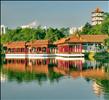
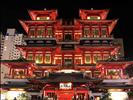













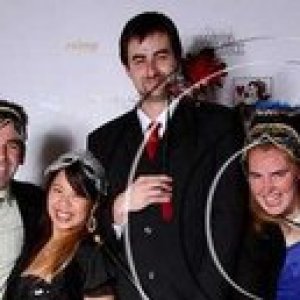


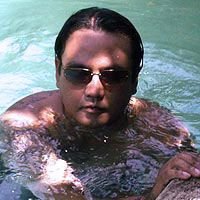
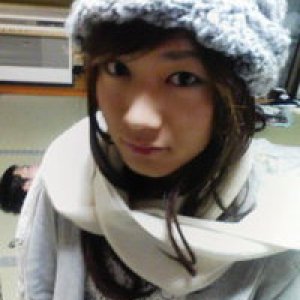
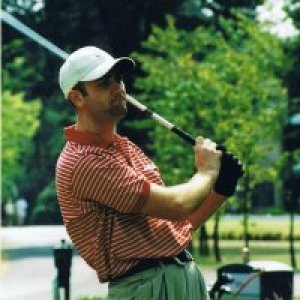


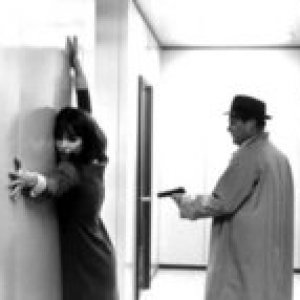


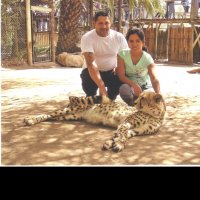
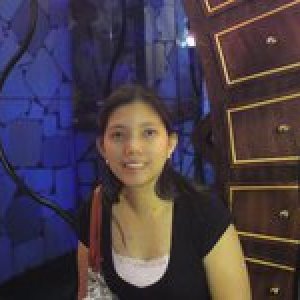
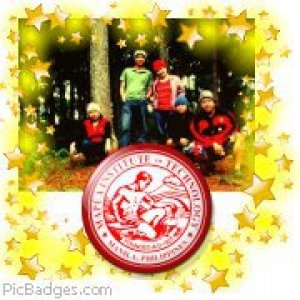

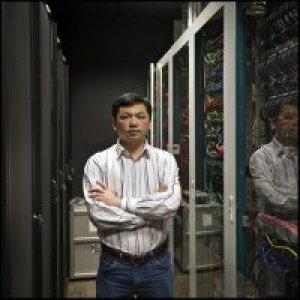

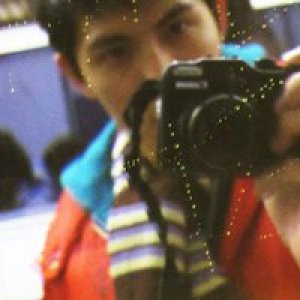

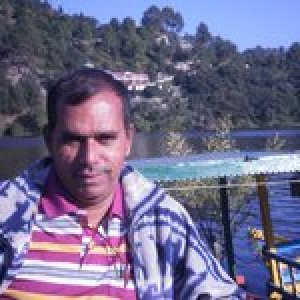
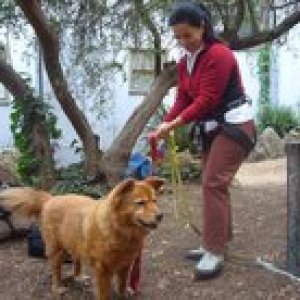

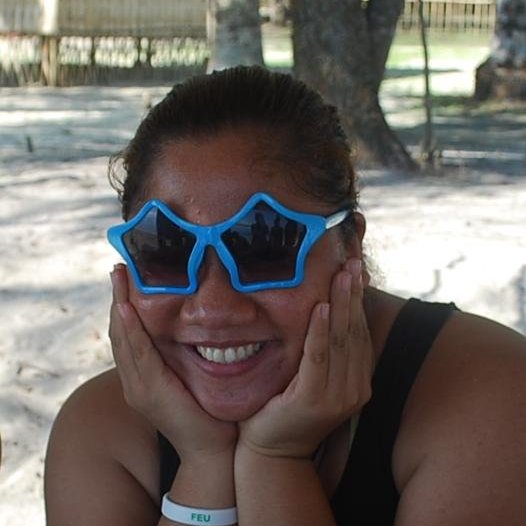
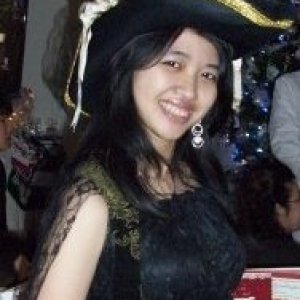
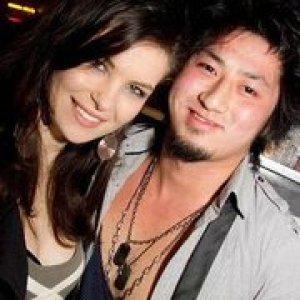




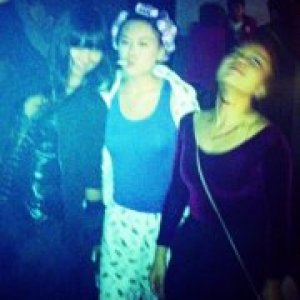


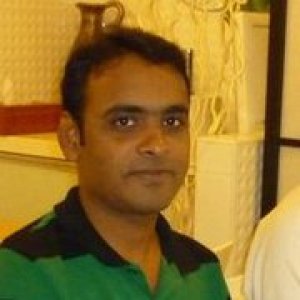
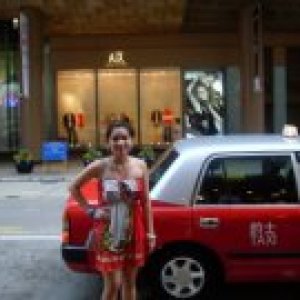

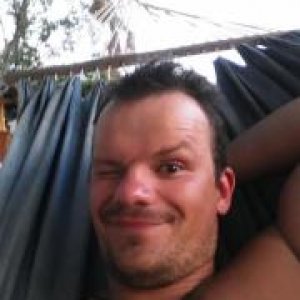













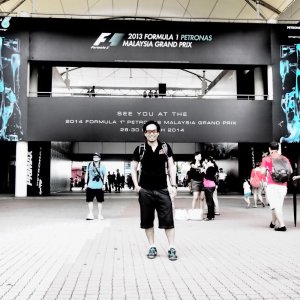




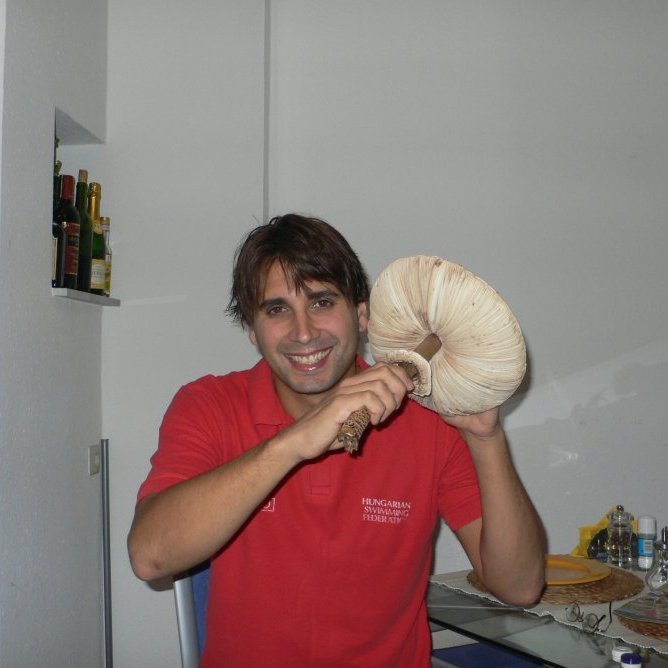
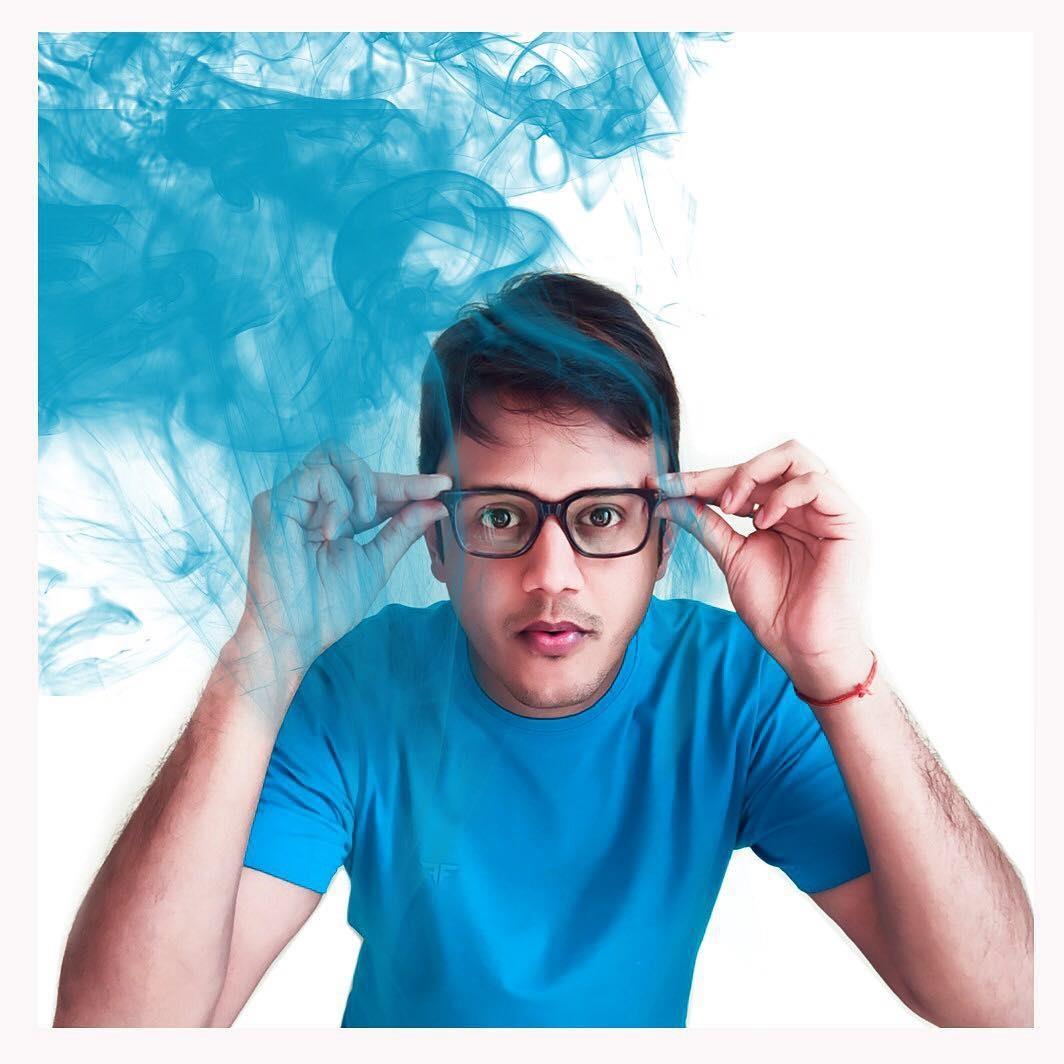

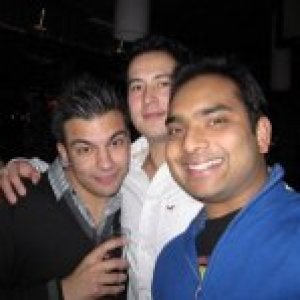

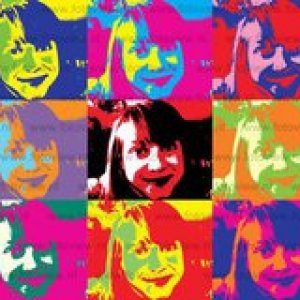
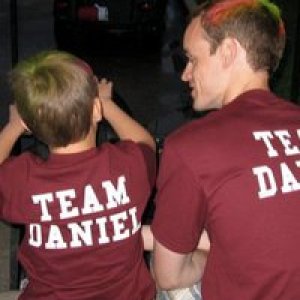

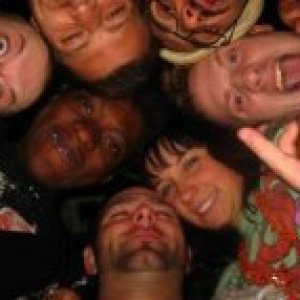


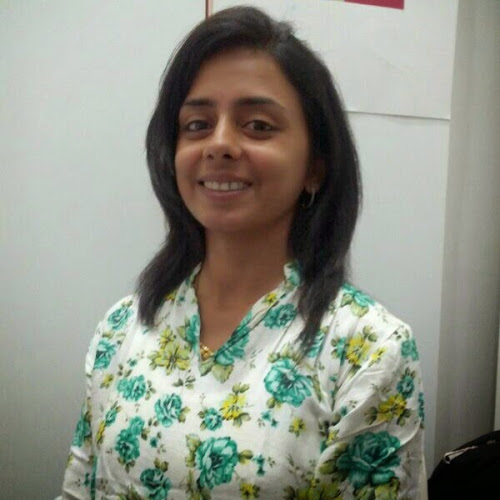
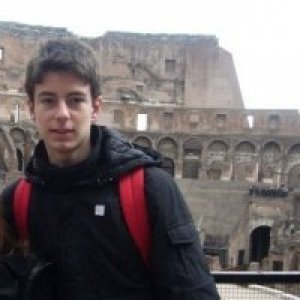
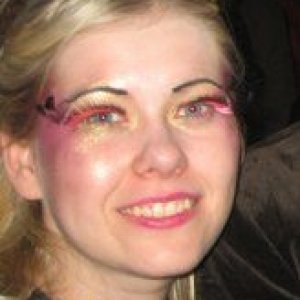
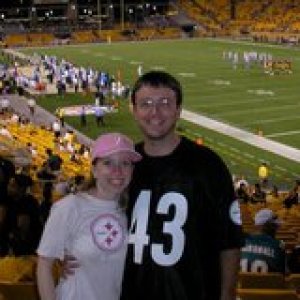
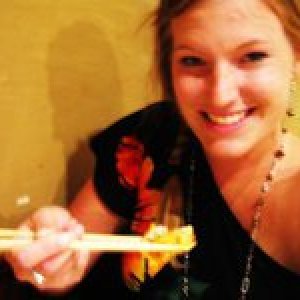
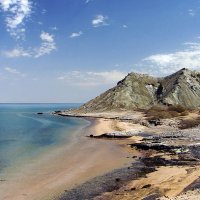
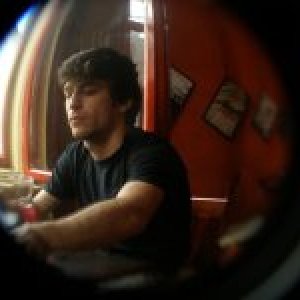

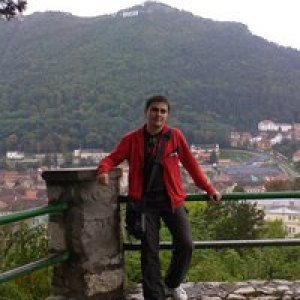
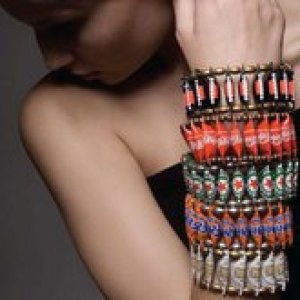



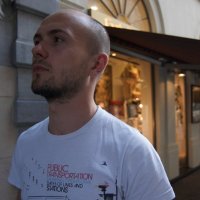

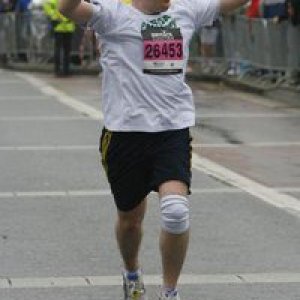
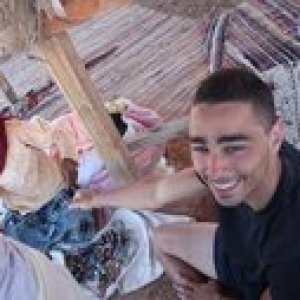

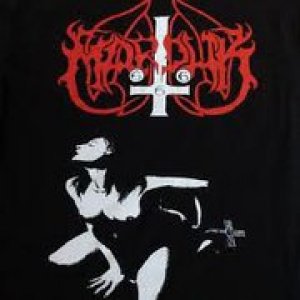

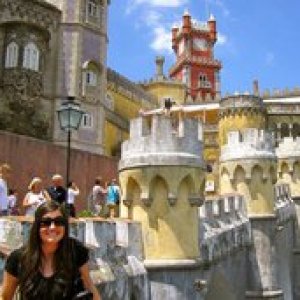
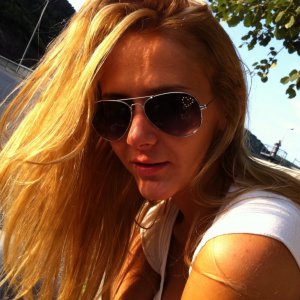


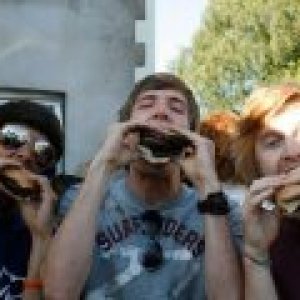


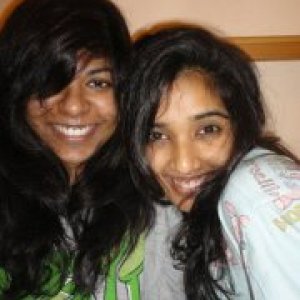

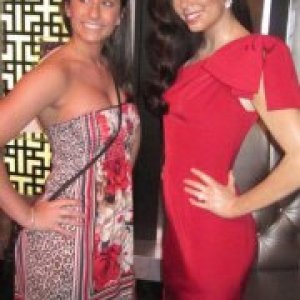









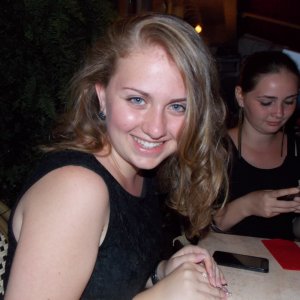
I liked
Complete covering of all details about SingaporeI disliked
Nothing